A new Crown steps into the civic spotlight
As head of a task force on Chicago crime, Jim Crown is taking on a challenge even more di cult than his father Lester’s causes I
 BY STEVEN R. STRAHLER
BY STEVEN R. STRAHLER
AT A RECEPTION LAST SUMMER at the Museum of Contemporary Art, an exhibition of works by Chicago artist Nick Cave wasn’t the only center of attention. Jim Crown, scion of one of Chicago’s richest families, was immobilized by a throng of well-wishers on the museum’s terrace. Crown, though, is on the move elsewhere. Since October, he’s been leading a public safety task force established by the Civic Committee of the Commercial Club of Chicago. At 69, he may be nally stepping into his father Lester’s civic leadership shoes to take on Chicago’s scourge of gun violence and the city’s regrettable global image as one big crime scene. e issue is more intractable and politically radioactive than even the knotty ones like O’Hare expansion and a new county hospital the elder Crown took on.
Olson, a Loyola University Chicago criminology professor
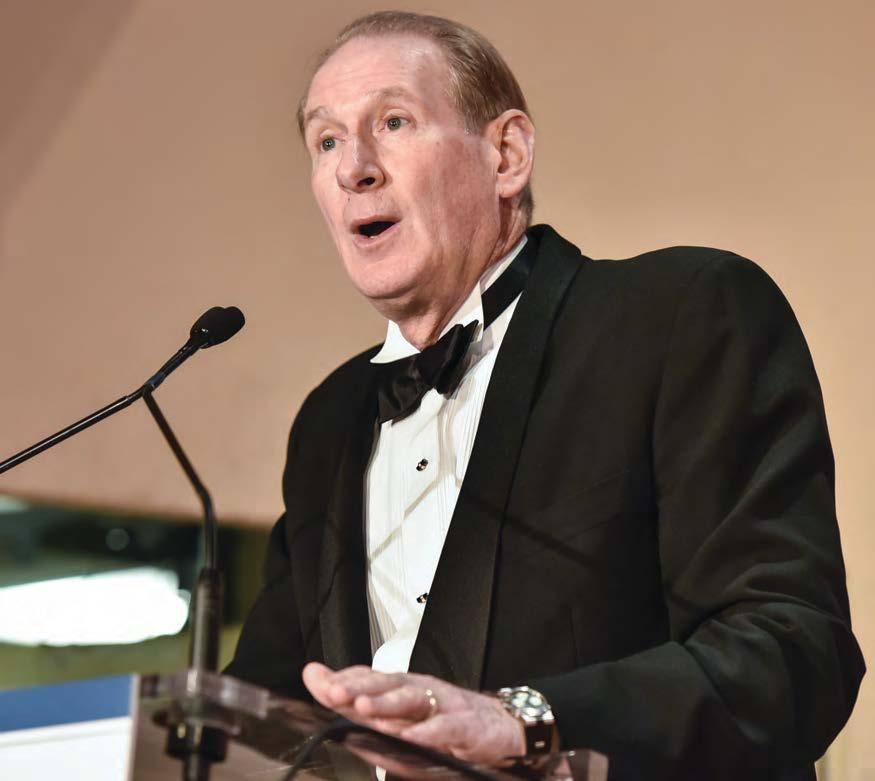
Get ready for income-based utility rates

 BY STEVE DANIELS
BY STEVE DANIELS
For the rst time ever, Illinois utilities are proposing to charge lower-income customers lower rates than everyone else.
Both Nicor Gas, which serves most of suburban Chicago, and Peoples Gas, which serves Chicago, have proposed new discounts for tens of thousands of residential customers as part of their record-setting rate-hike requests led earlier this month. Chicago-based electric utility Commonwealth Edison says it will o er a “progressive” rate-set-
ting proposal by next year. But the discounts wouldn’t cost the utilities any money. eir other residential and business customers would pick up the tab for the subsidized customers.
e utilities are responding to a directive in December from the Illinois Commerce Commission, which was authorized in 2021 to reduce utility rates for lower-income households, funded by commensurately higher charges for those above the income threshold. e initiative

Tech ethos on trial in Outcome Health case
 BY JOHN PLETZ
BY JOHN PLETZ
Not so long ago, Rishi Shah and Shradha Agarwal were the shining hope of Chicago’s startup scene. is week, the 37-year-old co-founders of Outcome Health will be tried in federal court on criminal fraud charges stemming from one of the most spectacular business ameouts in Chicago
history. ey pleaded not guilty, as did former Chief Operating O cer Brad Purdy, 33, who is also charged with fraud.
Shah, Agarwal and Purdy face up to 30 years in prison each if they’re convicted on charges of mail, wire and bank fraud in a scheme that prosecutors allege duped big drug companies and
REAL ESTATE
GETTY IMAGES CHICAGOBUSINESS.COM | JANUARY 23, 2023 | $3.50 MADELEINE DOUBEK: One fix could solve many problems with city government. PAGE 2
A
their
in the sun . PAGE 3
JOE CAHILL:
irlines enjoy
moment
The
PAGE 23 YOUR VIEW Here’s how we
support women-owned businesses. PAGE 10 NEWSPAPER l VOL. 46, NO. 4 l COPYRIGHT 2023 CRAIN COMMUNICATIONS INC. l ALL RIGHTS RESERVED
rehabbers of this bungalow refused to pop the top.
can help
Huge rate hike proposals from Peoples Gas and Nicor include discounts for lower-income customers, funded by those who make more
Rishi Shah and Shradha Agarwal are the latest startup founders to face serious jail time if convicted of fraud
WANTS TO SEE POLICE VISIBLE IN FRONT OF ESTABLISHMENTS FOR THEIR OWN BENEFIT.”
“BUSINESS
See GAS on Page 22 See OUTCOME HEALTH on Page 20 See CROWN on Page 21
David
Jim Crown
In the nal weeks, it’s a wide-open mayoral race
With about ve weeks to go, the race for mayor of Chicago is absolutely wide open, up for at least ve of the nine contenders to capture—or fumble away.
Mayor Lori Lightfoot is in trouble, but don’t count out the wily and strong-willed incumbent. U.S. Rep. Jesus “Chuy” Garcia likely is the current leader, but he needs to quit acting like he’s got it won. Close on their heels are former Chicago Public Schools CEO Paul Vallas, Cook County Commissioner Brandon Johnson, businessman Willie Wilson and, perhaps, Ald. Sophia King, 4th.
In a nine-person eld—and after years of COVID, crime, economic decline and other woes—anyone who says they know how this will turn out is smoking bad weed. If average Chicagoans and big business donors wake up to that reality—so far, my impression is that voters are not really engaged and business remains uncertain—this election
will be one for the books.
Here’s what I see, and what to watch for:
Four years ago, if you’ll recall, a little-known lawyer named Lori Lightfoot caught a gust of public support when Ald. Ed Burke, 14th, was indicted on federal corruption charges and rumors exploded about the future of Illinois House Speaker Mike Madigan. Lightfoot’s vow to drain the swamp was exactly what voters wanted.
Instead, they got a mayor who has excelled in making enemies; someone who, whatever her legitimate claims to have moved Chicago in the direction of racial and economic equity, had to govern in the middle of a pandemic and a resulting crime wave her team has only begun to tame. at has put her solidly on the defense. And though she’s used her fundraising to burnish her reputation and go negative on Garcia, he still leads in most recent polls and much of her cash hoard is gone. At least as bad:
In lakefront wards like the 44th and 43rd that should be friendly territory, her support is so weak that her appointed 43rd Ward Ald. Timmy Knudsen wouldn’t even endorse her at a candidate forum last week. Will someone else join Lightfoot in trying to hobble Garcia? Will any Black candidates drop out? Will King, the only other woman on the ballot, come up short in raising the cash she needs to go on TV? Lightfoot could use some help on those. Garcia has big name recognition but has been running a fairly quiet, cautious campaign so far. at may not be enough. I’m told he’s reached out to prominent business gures, but none have gone public yet. And he still has yet to really explain why fallen crypto king Sam Bankman-Fried spent $200,000 on Garcia’s political behalf last year, or say whether his informal alliance with Madigan was real.
If I were Garcia, I’d be worried about who’s coming up on my left. at’s Johnson, who has quietly
GREG HINZ ON
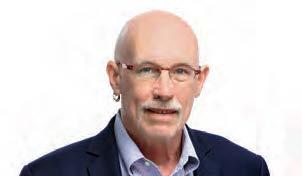
POLITICS
assembled a seven- gure war chest; has substantial precinct help from the same progressive army that elected Delia Ramirez to Congress; and is trying to supplant Garcia as the voice of a new generation of activists who want to squeeze the well-o and privileged until the working class—and the Chicago Teachers Union—are content. en there’s Wilson, whose base is low-income Black voters, but whose politics borrow a few pages from the Book of Trump. And Vallas, who is trying to prove his talents as a former schools chief and his mainstream ideology in a left-leaning city are what Chicago wants.
Wilson has been trying to peel o some of Vallas’ base in what used to
be known as white ethnic wards on the Northwest and Southwest sides. Vallas needs to hold onto those while emphasizing his competence if he’s to pull votes elsewhere, especially on the North Side. His acceptance of an endorsement from the Fraternal Order of Police was a big gamble, but Vallas has been much more disciplined than usual this campaign.
Out of that morass, Chicago on Feb. 28 will chose two contenders to go to an April runo . Four years ago, in a larger eld, the top vote-getters nished the rst round with 17.54% (for Lightfoot) and 16.05% (for Cook County Board President Toni Preckwinkle) of the vote.
Like I said: wide open.
Solving this problem would resolve many others
Chicagoans, what worries you most?
Is it the escalating gun violence and crime? e rising cost of living and whether you can a ord to keep calling Chicago home? Maybe it’s the quality of the education your children are getting?
Whether it’s any or all of those things, or something di erent, the chances of those worries being addressed and dealt with head-on likely would increase exponentially if the city’s voters actually got to choose all of their elected o cials.
Sure, there’s an election for mayor and alderperson coming up Feb. 28, but a majority of the current incumbent council members chose who the voters would be for their wards or their successors’ wards when they cut a deal in a back room and then voted in public last May for a map that set new ward boundaries for the next decade.
ose boundaries, primarily, were drawn with regard to what made sense for the incumbents and their ability to keep their political power, not with any regard for what made sense for people in the neighborhoods and communities of Chicago. And, Chicago being Chicago, some of the boundaries were drawn in crazy-quilt fashion to punish those who wouldn’t go along to get along and who caused grief during the map process. Go ahead, Google a map of the 33rd Ward or the 15th Ward.
Chicago’s wards form the foundation of government, and, it stands to reason, elected o cials’ responsiveness to residents’ worries would increase if that foundation were set in a way that was fair and encouraged accountability from those members. In other words, if your council member is con dent she or he will win re-election, do they really need to pay more than lip service to you when you register a concern about that shooting in broad daylight the other day? Probably not.
at is why you need to care about the way wards are drawn. And that is precisely why more than a dozen community-based organizations from all over Chicago worked together to develop a survey to nd out where the mayoral and aldermanic candidates stand on how ward mapping and redistricting gets done.
Organizations as diverse as the Rainbow/Push Coalition, Muslim Civic Coalition, the Coalition for a Better Chinese American Community, the Resident Association of Greater Englewood and the Union League Club of Chicago, to name a few, believed it was important to get candidates on the record about ward mapping.
is rst-of-its-kind survey produced some promising results for those of us who believe ward redistricting should not be done by incumbents.
Most of the candidates for Chicago mayor and scores of the majority of aldermanic candidates who responded said they believe it’s time to change the behind-closed-doors, incumbent-controlled approach to ward remapping.
Mayor Lori Lightfoot rst campaigned on moving to independent ward mapping, but did not ful ll that pledge and encouraged a council compromise last year. Her campaign turned down the chance to answer the survey.
Five of the nine mayoral candidates did respond, and aldermanic candidates in 38 out of 50 wards also explained their views on shaping wards here.
Candidates have a lot of requests to answer surveys. It also can be telling when they choose not to participate. One resident commented on social media that she’d read the responses and added, “ ose who didn’t answer aren’t options for me.”
In 2021 and 2022, my nonpartisan nonpro t, Change Illinois, created a diverse resident redistricting
commission that took input from all over the city and drew its own map for Chicago, in public, to model and demonstrate a better way to map wards and communities. e residents who served on that commission centered their boundaries on what they thought worked for residents after they spent months listening to hundreds of residents who provided public input.
One of the council candidates now running followed that resident commission’s work and recently passed along her feedback: “ e education and the information provided by the Redistricting Commission was invaluable, and it surpassed
anything that regular citizens had been provided in the past. If all of our elected o cials could bring this type of transparency and professionalism to our communities, we could nally have a system by and for the people.”
Indeed.
Worried about gun violence? Rising in ation or taxes? Safe, quality




schools? Food deserts? en you also should care about how wards are drawn. Before you vote, learn about where the candidates stand on this core topic at ChangeIL.org.
Madeleine Doubek is executive director of Change Illinois, a nonpartisan nonpro t that advocates for ethical and e cient government.
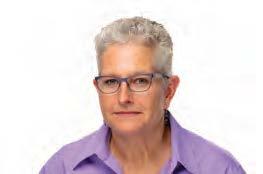
2 JANUARY 23, 2023 • CRAIN’S CHICAGO BUSINESS Banking products pro vided by Wintrust Financial Corp. banks. GET ASSURANCE . LET US GET TO KNO W Y OUR BUSINESS . GET CO MMITMENT . GET AT TENTION. Be your banker’s top priority. WINTRUS T. CO M/PRIORITY MADELEINE DOUBEK ON GOVERNMENT
BLOOMBERG
Rebranding puts a spin on Ariel Investments’ philosophy
The Chicago asset manager’s 40th anniversary is marked with an enigmatic new tagline, ‘Active patience.’ But CEO John Rogers’ value-oriented investment approach isn’t changing. I
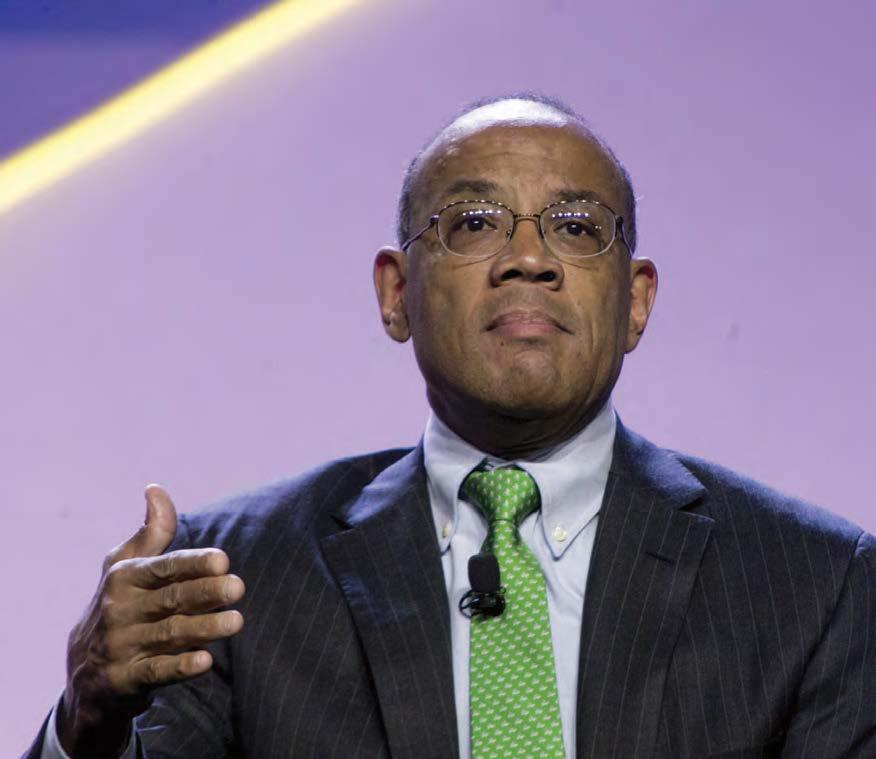 BY STEVE DANIELS
BY STEVE DANIELS
Ariel Investments is marking its 40th anniversary with a rebranding campaign that attempts to give the tortoise that for decades has been the asset management rm’s mascot a bit more pep in its step.
e Chicago-based rm—a pioneer as a Black-owned mutual fund house, founded by John Rogers Jr., who continues to manage money and serves as co-CEO along with longtime executive Mellody Hobson—is now using the tagline “Active patience.” It’s a tweak of its identity as a steady, value-oriented investment rm sifting for unjustly unloved stocks and then holding them until they are properly
See ARIEL on Page
18
BY STEVE DANIELS
Commonwealth Edison has led with state regulators to hike its delivery rates by $1.5 billion over four years, beginning in 2024.
e multiyear rate plan, authorized under the landmark Climate & Equitable Jobs Act, would boost ComEd’s distribution revenue by nearly 50% over that period if approved as submitted, according to a Securities
bills by 18% over four years
& Exchange Commission ling Jan. 17 by ComEd parent Exelon.
e numbers are well above the historically high rate hikes ComEd obtained under the 2011 formula-rate law, which permitted the utility to change its delivery rates annually under a formula that essentially removed the ordinary authority the Illinois Commerce Commission has to set utility rates.
In 2024 alone, ComEd seeks to hike its delivery rates by $894
million, by far the steepest oneyear rate increase ComEd ever has sought. After that, rates would increase by an average of $198 million annually through 2027.
Much of the eye-popping increase can be explained by a spike in the return on equity ComEd is requesting—essentially its pro t level. ComEd’s requested ROE for 2024 is 10.5%. Its
JOE CAHILL ON BUSINESS
Airlines enjoy their moment in the sun
Airlines are facing some of the toughest operating conditions they’ve ever experienced. And that’s been great for business at many carriers.
Along with the usual e ects of winter weather, supply chain constraints are holding airlines back as they emerge from the pandemic. ey’re short of pilots, planes and parts. And some are hamstrung by outdated technology, a shortcoming that became painfully apparent late last month when Southwest was forced to cancel thousands of ights as snowstorms swept the country. ese conditions hobble carriers as they try to absorb a surge of pent-up demand from travelers eager to hit the road after two years of COVID-19 restrictions. Total passenger volumes in the U.S. rose nearly 40% in the 12 months ended in October, according to the latest data available from the Bureau of Transportation Statistics.
Widespread cancellations during the summer and holiday travel seasons showed airlines couldn’t handle so much demand. Which isn’t to say it was bad for business.
In fact, airline economics have ipped from atrocious two years ago to nearly ideal today. Demand for airline seats exceeds the supply, giving carriers power to raise fares. So that’s what they’re doing, to the tune of a 22% rise in average airfares in October. Rising fares are driving revenues and pro ts past pre-COVID levels at major carriers like Delta, American and Chicago-based United.
IMBALANCE anks to the supply/demand imbalance, airlines are making more money carrying fewer passengers than they did before the pandemic. United, for example, posted fourth-quarter passenger revenue of $11.2 billion, up 13% from the fourth quarter of 2019. Pro tability soared, too, with pretax income up 34% and operating margin expanding to 11% from 8%.
Those gains came despite a 5% drop in passenger volumes and a 9.5% decline in available seating capacity. Delta reported similar trends, and American is expected to do the same when it discloses full fourth-quarter results on Jan. 26.
United CEO Scott Kirby was quick to credit his airline’s preparedness for post-COVID realities. In a triumphant fourth-quarter earnings call, he declared that “it’s a new world—you can’t run the airline like you did in 2019,” and bragged that “we saw that coming earlier than others and are better prepared to deal with it
than everyone else.”
ere’s no denying that United looked to the future as COVID ravaged air travel demand. While other carriers furloughed pilots, slashed eets and waited out the storm, United bet on a rebound in demand. Kirby kept pilots and planes at the ready, positioning the carrier to capitalize when customers came back. United also invested in technology and built slack into ight schedules, moves that keep the weather disruptions that routinely upend air travel from becoming full-scale meltdowns like the one Southwest experienced last month.
SEEKING AN EDGE
Kirby gures the investments will give United more than a short-term edge in the aftermath of COVID. He says the company also has what it takes to overcome “long-term structural issues” that will limit the industry’s growth for years to come: ere aren’t enough pilots, or planes, or spare parts; the air tra c control system can’t handle more ights.
“So to be clear, while I don’t think the industry can grow, I think—we think United can,” he said, in one of the boldest statements you’re likely to hear from a public company CEO on a quarterly earnings call.
How can United defy industrywide headwinds? Kirby says investments the carrier has made in areas such as pilot training, technology, operational resiliency and customer service will create advantages over rivals that he believes haven’t adjusted to fundamental industry changes.
Kirby is on solid ground when he argues that the industry’s current challenges will take a while to solve, and there’s no question that United’s operating performance has improved. But his nancial case gets a bit dicier over time. He’s essentially betting on a permanent supply/demand imbalance in air travel, which will give United the pricing power to expand pro t margins as labor costs and other expenses rise.
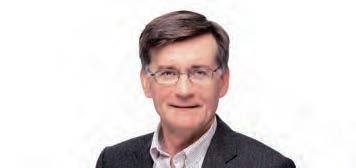
Yet economic history shows supply/demand imbalances don’t always last, particularly in the airline business. At some point, pilot shortages will ease and new aircraft will be delivered, creating new capacity to soak up excess demand. As supply and demand level o , airlines will likely nd it harder to push through fare hikes.
ey may even resort to the price competition that squeezed industry pro ts in the past.
at’s when we’ll nd out if Kirby has really future-proofed United Airlines. For now, United and other carriers can enjoy the ride.
CRAIN’S CHICAGO BUSINESS • J ANUAR Y 23, 2023 3
four-year rate hike totaling $1.5 billion The utility’s rate ling, authorized under Gov. J.B. Pritzker’s Climate & Equitable Jobs Act, would hike average household electric
ComEd seeks
John Rogers Jr., co-CEO of Ariel Investments
WITH $16.2 BILLION IN ASSETS UNDER MANAGEMENT AT YEAR-END, ARIEL HAS DONE A GOOD JOB CONVINCING INVESTORS TO SIT TIGHT.
See COMED on Page 21
Postgrads compete to be Wienermobile drivers
Kraft Heinz subsidiary Oscar Mayer is hiring college graduates to spread the good word about hot dogs
BY JACK GRIEVE
e Oscar Mayer Hotdogger position is the dream job you never knew you wanted.
is summer, 12 recent college graduates will travel the country in the meat packager’s six Wienermobile vehicles. Two Hotdoggers per Wienermobile, an average 20,000 miles each. And they’ll get paid to do it, bene ts and everything.
Being a Hotdogger is not for just anyone, though. More than 2,000 recent graduates apply to the program each year and only 12 make the cut. “It is statistically easier to get into an Ivy League university than to be granted acceptance into the Oscar Mayer brand’s class of Hotdoggers,” said Ed Roland, the company’s senior manager of brand communications.
But for those who do make it in, the job lives up to the hype.
“It was genuinely the coolest, most unique experience I could have had right out of college,” said Woodstock native Katie Ferguson, a former Hotdogger who drove the Wienermobile across the Midwest and Southern United States. She recalled taking trips to national parks and driving the 27-foot-long car around professional racetracks.

e Wienermobile dates back to 1936, when the brand tapped Chicago’s General Body Co. to
design the rst 13-foot hot dog vehicle. Oscar Mayer being a subsidiary of Chicago-based Kraft Heinz, the Wienermobiles have maintained a particularly strong presence in and around the city.
“We always used to joke that there’s always a Wienermobile in Chicago,” said Cameron Callanan, a member of the 32nd class of Hotdoggers. “ ey would rotate a team there all the time because there was so much need there between sales and corporate events.”
RECRUITMENT
Oscar Mayer frequents a slew of college campuses to recruit soon-to-be graduates for the program. at includes the University of Missouri, where Ferguson earned a degree in communications. “I knew it was a pretty prestigious position that people in my major often apply for,” she said. “So I thought I’d just give it a shot.”
is kind of work runs in the family for Ferguson. She says her grandmother held an almost identical job in the 1950s. “It wasn’t for Oscar Mayer, but she traveled the country spreading the good word about hot dogs.”
Hotdoggers take on two sixmonth stints traveling in pairs around di erent designated regions of the United States. Fer-
guson says every day is di erent, but a typical week entails driving to a new city on a Monday, getting two days o and then working six- to eight-hour days the rest of the week.
A big part of the job is hosting pop-up events at grocery stores where Hotdoggers show o the Wienermobile, hand out Oscar Mayer merchandise and give away in-store coupons. But depending on the day, Hotdoggers can nd themselves anywhere from corporate events to the Super Bowl.
Part of the appeal of the program is that Hotdoggers get to see the country in a way few oth-
ers can. “I had more small-world experiences than I’ve ever had in my life,” Ferguson said. at is true even on the days when the Hotdoggers are not working. “If you wanted to go grocery shopping or something, you were taking the Wienermobile,” explained Callanan. “I ended up in a Trader Joe’s parking lot for like 45 minutes once because I couldn’t get people to just get out of the Wienermobile.”
BRAND LOYALTY
e Hotdoggers’ love for the job lasts long after their time in the Wienermobile is over. Ferguson still speaks of the year on
the road with hotdog puns, insists that a Wieinermobile “meetand-greet” is spelled “M-E-A-T” and says the role of a Hotdogger is to “drive miles of smiles across America.”
“We are lifers,” Callanan said, adding that she even has a tattoo of the Wienermobile. is year’s Hotdogger applications are now open as the company continues to lean into levity and nostalgia for the brand. Kraft Heinz has a product lineup with the type of brand recognition other marketers envy, and it’s looking to revamp that status among its subsidiary companies like Oscar Mayer.
These are the best hospitals in Chicago, says a new list
BY KATHERINE DAVIS
Fourteen Illinois hospitals ranked among the country’s best facilities on a new list from Healthgrades, a Denver-based consumer marketplace for nding physicians and care.
e list, published Jan. 17, puts Ascension Alexian Brothers and Carle Foundation Hospital in Urbana among the nation’s top 1%, with Advocate Lutheran General Hospital in Park Ridge ranked among the top 2%.
e annual list groups hospitals into the top 50 (1%), 100 (2%) and 250 (5%) nationwide. e rankings are based on Healthgrades’ analysis of performance and outcome clinical data among nearly 4,500 U.S. hospitals across more than 31 of the most common procedures and conditions, like heart attack, stroke, hip replacements and pacemaker surgeries.
Both Ascension Alexian Brothers and Carle Foundation Hospital were ranked among the top 50 in the two previous years. Lutheran General Hospital was ranked among the top 100 hospitals in 2022 and 2021 as well.
Meanwhile, Chicago’s Northwestern Memorial Hospital and the University of Chicago Medical Center joined the list this year and were both ranked among the top 250 hospitals. ey were accompanied by Advocate Good Shepherd Hospital in Barrington, OSF Saint Joseph Medical Center in Bloomington, Evanston Hospital, Northwestern Medicine Lake Forest Hospital, Northwestern Medicine McHenry Hospital, Silver Cross Hospital in New Lenox, Advocate Christ Medical Center in Oak Lawn, and Javon Bea Hospital–Rockton in Rockford.
Rush University Medical Center is missing from this year’s ranking.

“Healthgrades ranks seven Rush University Medical Center specialties as among the best in Illinois so we were surprised to not be included in the national list,” the health system said in a statement. “While methodologies di er, that Rush University Medical Center is one of the few hospitals in the country to be ranked or rated very highly by U.S. News & World Report, Leapfrog, Vizient and the federal gov-
ernment’s hospital compare star system speaks to our continued commitment to provide the best care possible for our patients.”
CRITICISM
Other hospitals have also criticized and questioned the methodologies and criteria used by ratings organizations, including Healthgrades, U.S. News & World Report and Leapfrog, whose rankings sometimes con ict with one another.
“We appreciate the ongoing e orts made by Healthgrades to improve the usefulness and accessibility of information for consumers,” said Chris King, chief media relations executive at Northwestern Medicine, which owns Northwestern Memorial Hospital. “As an organization committed to providing high-quality, safe, patient-centered care, our physicians, nurses and sta are always focused on doing what is best for our patients.”
UChicago Medical Center didn’t immediately respond to a request for comment.
“ is is one of many hospital rating systems,” Amy Barry, the
University
vice president of corporate communications and marketing at the Illinois Health and Hospital Association, said in a statement to Crain’s. “Each system has a di erent criteria and methodology. Patients are encouraged to do their research when choosing a hospital for their healthcare needs and it is very important to get the full picture by accessing all the rating tools available.”
Healthgrades said it publishes the list to help consumers nd the best care in their area. e
organization says that if all hospitals performed similarly to the best 250 providers on its list, more than 160,000 lives could have been saved in 2019 and 2021.
“With these awards, we are helping consumers identify the highest quality care in their community by celebrating the hospitals that consistently deliver better-than-expected clinical outcomes,” Burt Kann, executive vice president and head of product at Healthgrades, said in a statement.
4 JANUARY 23, 2023 • CRAIN’S CHICAGO BUSINESS
The rst Wienermobile was designed in 1936 by Chicago’s General Body Co. The eet now includes six full-size Wienermobiles and an assortment of customized vehicles.
Northwestern Memorial Hospital and UChicago Medical Center join this year’s annual Healthgrades list. One prominent hospital was left o the ranking.
of Chicago Medical Center joined the list this year and was ranked among the top 250 hospitals.
UNIVERSITY OF CHICAGO MEDICINE
OSCAR MAYER
The diversity of the people and neighborhoods are the heartbeat of the Chicago region. United Way works to ensure every person has equitable access to opportunities and neighborhoods can thrive. With your support, we can invest in continue d progress and create a Chicago region where every child has better access to quality education, communities are safer, our neighbors are healthier, incomes increase, and our region prospers.

Now is the time to LIVE UNITED and build a stronger, more equitable Chicago region. Join us at LIVEUNITEDchicago.org




























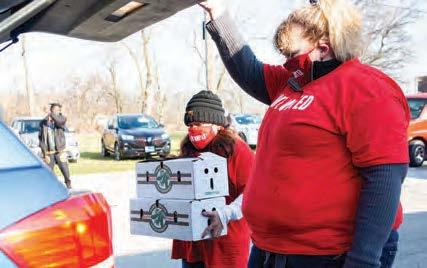




































































































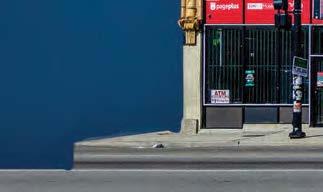



A ban on gas stoves? Chefs throw cold water on the idea.
While health worries fuel talk of regulating the appliances, restaurants have concerns and industry groups are ready for a ght: ‘Restaurateurs are up in arms’
BY H. LEE MURPHY
Recent research has shown gas-burning stoves emit a toxic stew of chemical compounds, leading to threats from regulators and legislators who want to ban gas ranges for residential use. Now restaurateurs, fearful they will soon get sucked into the debate, are speaking out.
“Gas being dangerous? If this were true, I’d be brain-dead by now,” says Ian Rusnak, chef and co-owner of the Chicago restaurant Elina’s, who has been cooking professionally on gas-powered stovetops since 2008. “There is a reason commercial chefs use gas ranges instead of electric—they are easier to work with and they cook more evenly and consistently. And they are more durable than the electric induction alternative.”
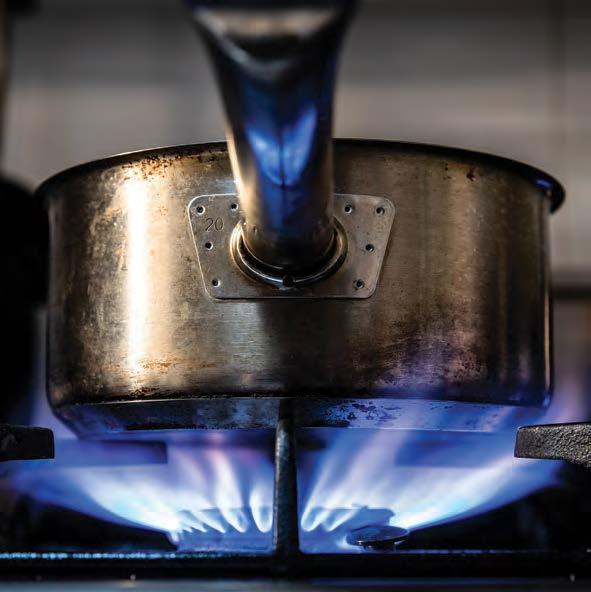
Local chefs estimate that somewhere around 90% of cooking in Chicago restaurants is done on gas-powered ranges; electric and wood-burning make up most of the rest.
Sarah Stegner, chef and co-owner of Prairie Grass Cafe in Northbrook, has been cooking with gas for 40 years. Powerful exhaust fans, plus an air filtration system, handle the smoke from her two massive six-burner ranges.
“I never feel bad or sick at the end of the day,” she says. “In fact, I feel good. I don’t think legislation banning gas is going to happen right away, but it could happen down the road. If somebody invents a solar oven for chefs like me eventually, I guess I could figure out how to cook with it. But some cooking techniques, like charring a sweet pepper, simply need an open flame. It’s hard to get around that.”
STUDIES
e prospect of regulatory action was sparked by recent comments from Richard Trumka Jr., a commissioner of the U.S. Consumer Product Safety Commission. He cited a study showing nearly 13% of childhood asthma is tied to gas-burning stoves. Other studies have shown the appliances can emit carbon monoxide and nitrogen dioxide at levels deemed dangerous by the Environmental Protection Agency and the World Health Organization. Trumka later told CNN, “We are not looking to go into anyone’s homes and take away items that are already there.”
What has restaurateurs particularly worried is lawmakers in some states who aren’t waiting for federal action. In 2020, Berkeley, Calif., was the rst city in the nation to ban gas hookups
on new buildings. Some 50 other cities around California have followed suit. New York Gov. Kathy Hochul this month backed a proposed ban on selling heating equipment powered by fossil fuels; the measure would not include gas stoves.
A conservative backlash has erupted as Republicans, in particular, have complained about legislative overreach.
And an industry group is ready to fight. Lauren Tuckey, a Chicago lawyer who sits on the advisory council of the Illinois Restaurant Association, says she is prepared to sue to stop any commercial gas appliance bans that might be passed in the state. She and others are skeptical of proposed legislation that would make an exception for commercial dining establishments. If gas hookups to buildings are forbidden in the future, the assumption is chefs eventually won’t have a choice.
“We need to see real data on this before prohibitions are enacted,” Tuckey says. “Is there any evidence that kitchen sta is dying of cancer at a higher rate than the rest of the population? We need to see a cost-bene t analysis. And we need to see evidence that if all cooking reverts to electric, can the current electric grid even handle this?”
Isidore “Izzy” Kharasch, a
restaurant consultant based in Deer eld and a former chef, predicts “the debate about gas ranges could become a big war.”
He notes that Republican legislatures in Texas and some other Southern states have already acted to forbid towns within their states from enacting gas bans.
ARGUMENTS
“State restaurant associations will be taking strong stands against a gas range ban,” he says. “Restaurateurs are up in arms. ey argue that electric ranges don’t have the power or the adjustability of natural gas.
Gas burners give you a superior amount of control over your cooking, and therefore a better
nished product.”
Some chefs, with $200,000 tied up in gas ranges in a typical restaurant, wonder how they could a ord to switch to electric even if they had to.
“I’m all for trying to make the environment safer, but who will pay for this?” asks Paul Virant, the owner of Vie in Western Springs and two other restaurants. “A switch to electric sounds great until you consider that much of the electricity in this state is still derived from power plants using fossil fuels. As for cooking dangers, it’s been known for years that the process of smoking and grilling foods results in carcinogens. is whole issue is very complicated.”
Groupon says it got stiffed by Uptake in sublease deal
BY JOHN PLETZ
Two of Chicago’s best-known tech siblings are in court fighting over unpaid rent.
Groupon is suing Uptake Technologies over $1.5 million in unpaid rent under a sublease agreement at 600 W. Chicago Ave.
Groupon was co-founded by Eric Lefkofsky and longtime business partner Brad Keywell. Lefkofsky is a board member of Groupon and one of its largest shareholders. Keywell is chairman and founder of Uptake, a data-science startup that achieved unicorn status—when that still meant something— with a $2.3 billion valuation five years ago.
Both companies have lost some of their luster over time, having gone through pivots and layoffs. Groupon, an online-deal provider, was just about to pull off Chicago’s biggest tech IPO when it leased more than 300,000 square feet at 600 W. Chicago Ave.
As the longtime home base for Lefkofsky and Keywell, two of Chicago’s most prolific tech founders, the former Montgomery Ward catalog house at 600 W. Chicago was Chicago’s best-known tech address before Fulton Market exploded.
GROWTH
Lefkofsky’s precision-medicine company, Tempus, which has nearly 1,000 Chicago employees and is valued at $8.1 billion, has grown to about 163,000 square feet. Echo Global Logistics, an online freight brokerage founded by Lefkofsky and Keywell, is the second-largest tenant with 183,076 square feet, according to CoStar Group.
Uptake subleased 57,572 square feet on two floors from Groupon in 2016 in a deal worth $18.2 million over 10 years. In its lawsuit, Groupon says Uptake hasn’t paid rent since July.
Groupon and Uptake declined to comment on the litigation.
A year ago, Groupon put all of
its space on the market for sublease amid rising office vacancies just after it laid off nearly 20% of its staff. Another round of cutbacks whittled its local headcount down to about 800 employees, or about one-third of its peak in 2012.

The company hired a new CEO in December 2021, but since then its stock is down by more than half. Groupon's business of retail deals was cashflow positive until the pandemic. The company had negative free cash flow of $182 million through the first nine months of last year.
SHRINKAGE
Headcount at Uptake—which focuses on providing data-analytics software and services to industrial, transportation and government entities—topped 800 ve years ago but eventually dropped by more than half. e company had hoped to ride the twin waves of Big Data and the internet of things to become a serious enterprise software player.
Not paying the rent could be a red flag for Uptake—which raised $117 million more than five years ago—in an environment where tech startups are cutting back wherever possible to conserve cash, especially if they raised money at high valuations.
Or it could be another sign of the lack of leverage landlords
have in a dismal office market with record vacancies that’s flooded with sublease space in a post-pandemic world of remote work.
Tech companies were among the most aggressive in adopting work-from-home policies during the pandemic, although some are bringing employees back to the office.
6 JANUARY 23, 2023 • CRAIN’S CHICAGO BUSINESS
Some chefs, with $200,000 tied up in gas ranges in a typical restaurant, wonder how they could a ord to switch to electric even if they had to.
The Chicago tech siblings are in court ghting over $1.5 million in unpaid rent
GROUP BLOOMBERG
600 W. Chicago Ave COSTAR
BY BRANDON DUPRÉ

Since 2020, billionaire philanthropist MacKenzie Scott has donated around $273.7 million to 30 Chicago nonpro ts, schools and other organizations, revealing for the rst time the extent of her giving spree here.



With a new website called Yield Giving, Scott’s foundation has released the records of her threeyear run that has bene ted more than 1,600 nonpro ts nationwide with north of $14 billion in unrestricted donations. e website gives some clarity into Scott’s often cryptic philanthropic endeavors: e donations, which are frequently the largest ever given to recipient organizations, are made without a formal proposal or application process.



“Information from other people—other givers, my team, the nonpro t teams I’ve been giving to—has been enormously helpful to me,” Scott wrote in an essay featured on the Yield Giving website.








“If more information about these gifts can be helpful to anyone, I want to share it.” She also discusses the process on the site.
In a 2022 study from the Cambridge, Mass.-based Center for E ective Philanthropy that looked at Scott’s public donations, the report found that while her approach to unrestricted grants isn’t new, the sheer volume and scope of her giving is unprecedented, as nonpro ts around the country have received massive lump sums. While some critics have said the amounts could overwhelm smaller nonpro ts, the study found the donations “allowed organizations to ful ll basic, unmet needs—from expanding programs to strengthening nancial sustainability to improving operations.”
CONTEXT




For some context, the Bill & Melinda Gates Foundation, one of the country’s most active and highest-pro le philanthropic organizations, gave a total of $12.5 billion from 2020 through 2021. Figures for 2022 are not yet available.
Scott’s largest donations in the Chicago area were $40 million to the University of Illinois Chicago; $25 million to United Way of

Chicago; $25 million to Chicago Public Schools; and $20 million to Easterseals, which serves the Chicago and Rockford areas. Some of Scott’s donations share grants with organizations outside of Chicago.


Scott has also given to One Million Degrees, the OneGoat Foundation and Habitat for Humanity Chicago South Suburbs, but Yield Giving is not saying how much they’re getting. On the website, a note for some recipients reads, “Disclosure delayed for bene t of recipient.”













ere’s also a question of why Chicago has been the focus of so much of Scott’s giving. Only one area in the U.S. seems to have received more of her money: Los Angeles County, with a total of $298.7 million. Other areas that have drawn large donations include Houston, with $179.2 million; and New York City, with $173.9 million.

Unlike other big philanthropists, Scott does not seem to have a spokesperson to answer that question, and contact information is missing from the Yield Giving website. Click on a



button labeled “Inquires,” and the site redirects to a page that reads, in part: “In order to cede focus to the organizations we’re supporting, we choose not to participate in events or media stories.” Scott has not given any interviews about her donations, instead discussing her gifts in blog posts.







ENTHUSIASM
Meanwhile, her gifts have been greeted with great enthusiasm. Karen Freeman-Wilson, president and CEO of the Chicago Urban League, which re -
ceived $6.6 million from Scott, said “we are ecstatic and humbled by the donation” and “we know that we have a responsibility to be great stewards of these resources and are grateful for this opportunity.”
Access Living President and CEO Karen Tamley last November called the group’s $8 million donation—the single-largest contribution in the organization’s 42-year history—”a truly life-changing investment for our community and will make an enormous impact in supporting the goals we’ve set for the future.” e disability service and advocacy nonpro t said the donation would go toward supporting “economic opportunity, racial and health equity, greater community-based support and digital inclusion.”
On her website, Scott also announced plans to introduce an “open-call process” that allows nonpro ts seeking donations from her to send information for consideration.
Scott has signed e Giving Pledge, promising to give away more than half of her wealth, most of which comes from her divorce from Amazon founder Je Bezos. Forbes puts her current net worth at $27.9 billion.
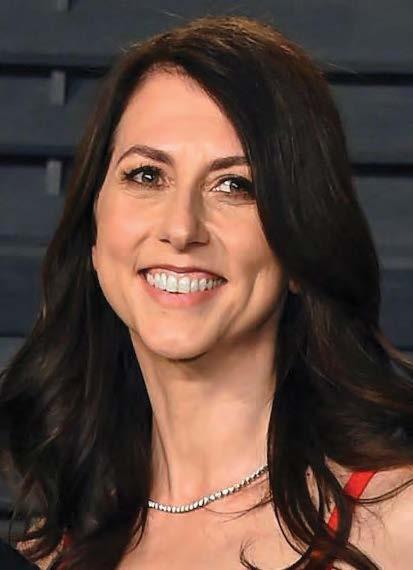
CRAIN’S CHICAGO BUSINESS • J ANUAR Y 23, 2023 7 Ten-X is a licensed Real Estate Broker | compan oad, With $30
Ten-X
SELLERS
transactions
See all current licensing at: https://www.ten-xx.ccom /compan p y/lega eg g l/liceensi n ng / Ten n n-X, X LLC 17600 Laguna Canyon Road, Ir vine, CA 92618 (888) 952-6393 © 2023
Billion sold and nearly 10,000 transactions closed,
is the digital transaction marketplace where
and BUYERS
twice as with twice the certain
2022 S ALE S VO LUME $613M $517M $166M $447M $58M $144M $639M
d and nearly ons transaction e BROKER S, R S can close as fast and cer taint y.
MacKenzie Scott reveals her Chicago donation spree
ALAMY
MacKenzie Scott
The billionaire philanthropist’s foundation released records showing who’s bene ted from the more than $273 million she’s given here
What two housing economists expect for the Chicago market
The worst is likely behind us, the economists told city and suburban agents recently, but the market will remain in the doldrums for most of the year
BY DENNIS RODKIN
e worst is likely behind us, housing economists told real estate agents gathered at two annual meetings recently, one for city and one for suburban agents.
e worst of the interest rate shocks, which knocked the wind out of a booming and sometimes frothy real estate market in the second half of 2022, may be over, though the housing market will remain in doldrums for much of the coming year.
at’s the essence of comments made by Dr. Lawrence Yun, chief economist for the National Association of Realtors, at a Chicago Association of Realtors market outlook event Jan. 11, and Anthony Chan of Chan Economics and former chief economist for JPMorgan Chase Bank at a similar event Jan. 13 for the suburban Main-
surging in ation using its primary weapon: interest rates.
“Rising mortgage rates suddenly upended all the aspirations” buyers, sellers and their agents had for the coming year, Yun said. As the year progressed and rates kept rising, “that led to hammering away at the market” for homes, he said.
HURTING AFFORDABILITY
By early November, the xed rate on a 30-year mortgage hit 6.95%, the highest in 20 years.
e impact on the housing market was clear: Sales dropped by more than 30% both nationally and in the Chicago area.
Yun expects year-end data, which would re ect both the still-booming early part of the year and the latter months’ drops, to show sales down about 16% from 2021 nationwide.
Interest rates have subsided in the past two months—down to 6.33% as of Jan. 12—but are still hurting a ordability for buyers.
more than 4.4%” by the end of 2023, nancial markets believe.
e Fed, he suggested, talks up higher rates because “they are trying to slow in ation. If they say they aren’t going to (raise rates), consumer con dence goes up, we continue spending and then in ation doesn’t slow.”
Quoting a Chinese idiom his father used to use, Chan said, “Sometimes you have to kill the chicken to scare the monkey.” at is, by appearing to be more pessimistic than they might actually be, Fed o cials can deter consumers from feeling the zzy optimism that drove spending during the recent boom years.
“ e reality is, (the Fed) may not do that much, and that’s going to be very bene cial,” Chan said.
Yun noted that the spread between the 10-year Treasury rate and 30-year mortgage rate, typically less than 2.5 percentage points and often below 2, grew sharply to more than 3 percentage points during the mortgage rate surge. Something of an overreaction “that will correct,” Yun said, as mortgage shocks subside.
has been relatively at, each week landing within about 1.5% higher or lower than the corresponding week in 2021.
at includes weeks from late November to early January, when many deals made on the steep up-slope of interest rates would have closed.
Prices, Yun said, “are still holding on.” at’s in large part because the inventory of homes for sale is super tight everywhere.
LOCAL JOB GROWTH
street Organization of Realtors.
A year ago, interest rates were in the 3% range, where they’d been for most of the past two years, fueling an unprecedented housing boom. en the Federal Reserve launched its attack on
Chan said he believes further Fed increases will be smaller than the Fed forecast in late December. e central bank’s forecast is that its e ective rate, which is typically a point or more below mortgage interest rates, will get to 5.1%. but Chan said “it’s probably going to be no
“We will not see higher rates again,” Yun predicted. “ is year, I think there will be a steady decline in rates.”
While interest rates shot up and sales sank in the second half of the year, the third leg of the stool—prices—were resilient. Weekly reports from Midwest Real Estate Data show that the median price of homes sold in the Chicago metropolitan area
Two reasons inventory is tight: Nearly everyone who was likely to sell sometime soon jumped into the market during the boom, ready or not, and homeowners “are very happy with their 3% mortgages,” Yun said, and disinclined to trade them for 6% or even 5% mortgages.
If interest rate and price conditions improve, Yun said, the Chicago area is positioned to see the housing market become vi-

brant again. e key reason is job growth.
Illinois has about 0.4% more payroll jobs now than immediately before COVID, according to an analysis of Bureau of Labor Statistics data by Yun’s research team. at’s well below places like Idaho, Utah, Texas and Florida, which are more than 6% ahead of their preCOVID jobs totals, he said, “but at least it’s in positive territory.”
Several Midwestern states, including Wisconsin, Michigan and Minnesota, are still behind their pre-COVID numbers. Indiana is the Midwest’s standout, with jobs up 2.2% from pre-COVID gures.
Illinois job growth, Yun said, “is not Spring eld and Peoria, it’s all Chicagoland where those jobs are created.”
Positive job growth is a good sign for the housing market in the coming year, Yun said. “It means more people are working in the state, which means more buyers as soon as rates come down.”
Ken Griffin sells Park Tower condo for $11.2 million
BY DENNIS RODKIN
Florida man Ken Gri n sold another of his former Chicago homes, this one for $11.2 million.
e 66th- oor condo at the Park Tower on Michigan Avenue sold Jan. 13. It’s the second completed deal in the sell-o of his downtown Chicago portfolio, which began in July when he put four units on the market with a combined asking price of $54.5 million.

e listings hit the market a few weeks after Gri n announced he would move his Chicago-based nancial empire and his family to Florida full time.
At the time of the announcement, Citadel spokesman Zia Ahmed told e New York Times that rms in Chicago “are having di culty recruiting top talent
from across the world to Chicago given the rising and senseless violence in the city. Talent wants to live in cities where they feel safe.”
It’s not only Gri n moving to Florida. News reports have said about 300 Citadel employees will also make the move within the rst year. To date, Crain’s has con rmed only one sale by a Citadel sta er who relocated to Florida. On Jan. 6, Rob Satzger, vice president of institutional sales at Citadel Securities, sold a house on Locust Road in Winnetka for a little over $1.82 million.
Gri n’s latest Chicago sale is a ve-bedroom, 8,000-square-foot unit he bought in 2012 for $15 million. At $11.2 million, Friday’s sale represents a 25% loss for the seller.
He also took a loss in the rst of his recent Chicago sales. at
was a full oor at the WaldorfAstoria tower on Walton Street, sold in October for $10.225 million, more than $3 million o what he paid for it in 2014.
REMAINING INVENTORY
Gri n still has two condos on the market. One, priced at $15.75 million, is one ight up from the one he sold on Jan. 13, on the 67th oor of the Park Tower, where he’s asking $15.75 million.
e other is one of his four oors at the top of No. 9 Walton. e unit, about 7,100 square feet on the 35th oor, has an asking price of $14 million.
e sale is by far the highest price recorded in the new year, although it’s been a hot few weeks at the upper end of the market, with four homes already sold at $5 million or more in 2023.
In
8 JANUARY 23, 2023 • CRAIN’S CHICAGO BUSINESS
“Rising mortgage rates suddenly upended all the aspirations” buyers, sellers and their agents had for the coming year, Dr. Lawrence Yun said at a Chicago Association of Realtors event Jan. 11.
2022, nine homes sold for $10 million or more in Chicago and the suburbs.
Susan Miner of Premier Relocation represented the Park Tower unit that Gri n sold Jan. 13, while Katherine Malkin of
Compass represented the buyers, who are not yet identi ed in public records. Listed for sale July 26, it went under contract to the buyers Nov. 22. No photos of the condo’s interior were included in the listing.
It’s the second of four upper-end Chicago condos the Citadel nancial chief has sold after putting them on the market shortly after announcing his move to Florida
The Park Tower on Michigan Avenue.
GOOGLE MAPS
VHT STUDIOS
BY APPEARING TO BE MORE PESSIMISTIC THAN THEY MIGHT ACTUALLY BE, FED OFFICIALS CAN DETER CONSUMERS FROM FEELING THE FIZZY OPTIMISM THAT DROVE SPENDING DURING THE RECENT BOOM YEARS.
Discover jolts investors with a bleak forecast
hasn’t seen since 2011
Discover Financial Services jolted investors on Jan. 19 with a projection that defaults on its consumer loans will roughly double in 2023.
Credit card companies like Riverwoods-based Discover experienced extraordinary growth in loan balances from their card customers last year. In Discover’s case, growth topped 20%, and card loans now exceed $90 billion. Investors are jittery about whether consumers are taking on too much debt in the face of inationary pressures and with the potential for more job losses as the economy slows this year.
Discover is projecting that net charge-o s on all its consumer loans, the bulk of which are credit cards, will range between 3.5% and 3.9% in 2023. In 2022, that gure was 1.82%, about equal to 1.84% in 2021.

e projection caught analysts by surprise. ey were projecting a gure between 2% and 3%. Discover’s stock price dropped more than 7% at the open of trading on Jan. 19 but clawed back much of that loss and closed down 0.4%.
e last time net charge-o s at Discover were that high was in 2011, when the company posted a 3.97% rate. at was as Discover and other card issuers were recovering from the ravages of the Great Recession. Discover’s loan losses peaked at 7.57% in 2010.
e economy today is not nearly as bad as then, so analysts peppered Discover executives with questions on its surprisingly dim outlook on a conference call this morning.
PUSHBACK
BY STEVE DANIELS BLOOMBERG
Discover Chief Financial Ocer John Greene pushed back on the notion that anything unexpected is happening. With lots of new cardholders and borrowers, losses from people Discover isn’t familiar with yet tend to be higher in the rst year or two than from longtime customers, he said.

“No surprises in the portfolio performance whatsoever,” he said.














“Overall, what we’re seeing here is a very strong portfolio and very signi cant vintages that came through in ‘21 and ‘22 and that are seasoning at levels that are completely within our expectations of total return thresholds,” he added.
In what bodes ill for consumer lenders who focus on borrowers with below-prime credit scores, Greene did say that the relatively small slice of Discover Card borrowers who fall into that category “are certainly feeling the impacts from in ation.” But the company so far has correctly predicted how those customers would perform, he said.
He expects loan losses to peak
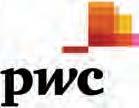

in 2024 and then fall again after that. Discover is projecting that unemployment will rise 1 percentage point this year. It’s currently at 3.5%, according to the Bureau of Labor Statistics.
Asked whether loan losses would exceed 4% in 2024, Greene wouldn’t o er a projection.
How rival card companies forecast 2023 is key to Discover’s stock performance going

forward. If peers like Capital One, which lends to a riskier set of borrowers than Discover, predict significantly rising loan losses, that will ease investor concern about Discover in particular.
But it may raise worries about the resilience of the American consumer in the face of continued in ation, rising interest rates and increased unemployment.
CRAIN’S CHICAGO BUSINESS • J ANUAR Y 23, 2023 9 Women Who Make a Difference Signature Event International Women’s Day March 8, 2023 5:30-8:30 PM | Four Seasons Chicago keynote Chanel DaSilva Co-Founder and Artistic Director, MOVE|NYC| Choreographer, The Joffrey Ballet MEDIA SPONSOR GLOBAL CITIZEN
Schwartz and Julia Stasch Purchase your tickets today! info@iwfchicago.org | 815-806-4908 IWFChicago.org Advancing women’s leadership and championing equality worldwide.
Debra
VISIONARY LEADERS
In
a worrying sign, the credit card company is projecting loan loss levels it
e Loop crisis must be a priority
As has been chronicled comprehensively in the pages of Crain’s, landlords in downtown Chicago are facing enormous challenges—awash in unused o ce and retail space, bu eted by rising property taxes, and staring down mortgages coming due in an economy teetering on the brink of recession.
Normally misery loves company but, in this case, knowing that their peers in other markets around the world are in a similar squeeze has got to be cold comfort to owners of Chicago commercial real estate.
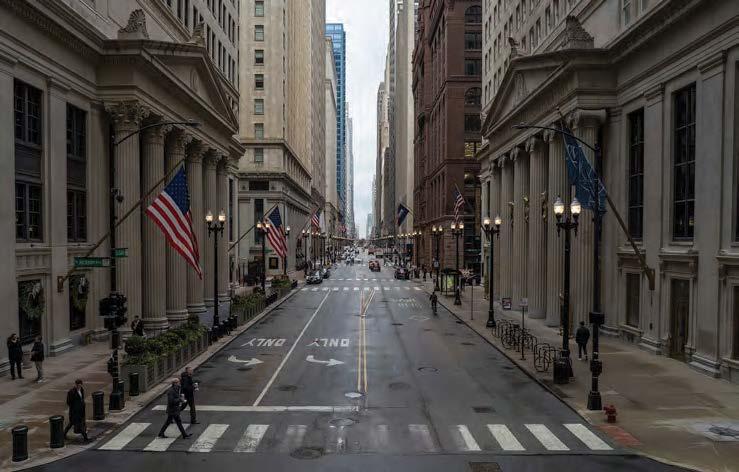
Indeed, as Crain’s and Bloomberg News report, almost $175 billion of real estate credit around the world is distressed—about four times more than the next biggest industry. As the toll from higher interest rates and the end of easy money mounts, many global real estate markets are almost frozen. Weak demand and a surge of sublease o erings from companies trying to shed unneeded workspace are forcing landlords to shell out huge amounts of cash and other perks to get deals done, while pushing some to surrender their properties to their lenders rather than face foreclosure battles.
Distress levels in European real estate, for instance, are at the highest in a decade. It’s a similar story in Asia as well as in other American metros beyond Chicago. As Bloomberg reports, several U.S. banks predict credit losses will grow this year. Bank of America, for instance, agged an additional $1 billion of o ce property loans with an elevated risk of default or missed payments, while Wells Fargo expects more stress to emerge in the U.S. market as demand for commercial space weakens.
e slump has been especially visible in
downtown Chicago since the outset of the pandemic. Soaring construction costs, rising property taxes and interest rate hikes have all had a huge impact. So, too, has a record amount of available o ce space. Retail landlords, meanwhile, are just as anxious to see more o ce workers coming downtown regularly again. Loop storefront vacancies stood at a 20-year high during much of 2022, as the absence of daily foot tra c compounded the e ects of online shopping on brick-andmortar retailing.
While a small parade of downtown o ce tower owners have turned over their buildings to lenders in recent months rather than engage in a foreclosure battle, the most bracing example of the trend came Jan. 11, when
Crain’s Danny Ecker reported that New York investment giant Apollo Global Management has taken control of the Chicago Board of Trade Building in the Loop and hired a developer to try to inject new life into the distressed landmark tower. A joint venture of Chicago-based Glenstar and Oaktree Capital Management of Los Angeles in December transferred the building to an Apollo-led venture rather than default on a $256 million mortgage—a maneuver that, much like the Board of Trade Building itself, now casts a shadow over the entire LaSalle Street canyon. e climb out of this hole will be particularly steep for buildings of the Board of Trade’s vintage, especially as gleaming new glass and steel towers continue to sprout
YOUR VIEW
west and north of the river and attract tenants who want sleeker, more exible space even if their workers only occupy it for a few days a week.
e Lightfoot administration has rightly recognized the trouble unfolding on City Hall’s very doorstep, pushing e orts to spark a major rethink of the LaSalle Street corridor and its future. As Crain’s reports, some of Chicago’s best-known developers are collectively pitching more than $1.2 billion in projects to turn outdated o ce buildings in this strip into places to live in response to a Lightfoot administration call for such proposals. But, as Crain’s has further explained, turning old o ce space into residential use will be a heavy lift, particularly if Lightfoot is to ful ll her goal of making a large swath of that new residential space a ordable. Construction is more expensive downtown and especially in the historically signi cant buildings along LaSalle Street. e location away from the lakefront and a lack of nearby amenities—including schools—could constrain rents for market-rate units.
Even so, it’s a crucial experiment worth taking on. As much as Lightfoot and many of the challengers hoping to unseat her are correct to call for renewed investment in troubled neighborhoods far from the Loop, the city can ill a ord to allow its central core to hollow out. e crisis unfolding in the Loop—and make no mistake, it is a crisis— deserves to be a much more front-and-center issue in the current mayoral campaign. Every candidate for the Fifth Floor o ce overlooking LaSalle Street must be pressed to articulate a vision for reviving the Loop. Even people who live far from the nancial district have a stake in that vision.
Here’s how to support women entrepreneurs
Women-owned businesses are on the rise, and much of America’s current startup boom is due to women starting businesses. Black women especially are entering entrepreneurship at rates that have not been seen before. Corporate America as well as government and philanthropic entities have taken note of this trend, and there is more support available for women founders than before.
Examples from Chicago include Gender Equality in Tech (GET) Cities supporting technology development of women-owned businesses on the philanthropic front, Cook County’s Source Grow grants for historically excluded businesses— including those owned by women and entrepreneurs of color—and corporations such as BMO Financial Group

supporting women entrepreneurs in finance through the WMNfintech initiative.
Amid such initiatives, it is easy to lose sight of the fact that we still need profound, systemic changes in order for women entrepreneurs to truly succeed. Despite all of the strides made over the past years, women are still underrepresented as entrepreneurs: The latest Global Entrepreneurship Monitor data show that for every 100 men engaged in entrepreneurship in the United States, there are 85 women.
As an entrepreneurship educator, researcher and supporter, I see a need for two systemic changes that can further elevate the status and success of women entrepreneurs. First, the narrative around capital raise as a metric of startup success needs to change. Sec-
ond, we are in desperate need of child care and elderly care options that are flexible, affordable and sustainable.
BIASED INDICATOR
The success metric that receives disproportionate attention in the startup world is capital raise. It is a biased indicator of success in that only certain industries and geographic areas have access to venture capital. It also creates unhelpful expectations for aspiring entrepreneurs who are led to believe that being able to attract capital from investors makes them successful—or, in reverse, that growth that is financed by revenues from the business itself is somehow less valuable than growth enabled by outside capital.
This means that much of the conversation on how to support women entrepreneurs focuses on capital access: Venture investment to all-female-founded companies persists at only 2.3% of the investments in all-male-founded companies, so women need help.
Write us: Crain’s welcomes responses from readers. Letters should be as brief as possible and may be edited.Send letters to Crain’s Chicago Business, 130 E. Randolph St., Suite 3200, Chicago, IL 60601, or email us at letters@chicagobusiness.com. Please include your full name, the city from which you’re writing and a phone number for fact-checking purposes.

Risk capital is necessary for some technology-based startups to scale, and it may serve an individual female founder well to learn to navigate fundraising strategies in the male-dominated VC world. But rather than training women how to behave like men for the sake of fundraising, we need to alter the system of startup capital access to be more varied and inclusive.
To get there, we can start by changing our collective narrative around equity funding in entrepreneurship. Today, capital raise remains the unquestioned metric for startup success and it directly factors into rankings as varied as best college programs in entrepreneurship and most friendly states for female founders.
But when only a small percentage of venture capital flows to female-founded companies, and simultaneously only 0.3% of owners of U.S.-based businesses ever receive venture capital, we should be questioning the relevance of the metric. Let’s start measuring and talking
Sound o : Send a column for the Opinion page to editor@ chicagobusiness.com. Please include a phone number for veri cation purposes, and limit submissions to 425 words or fewer.
10 JANUARY 23, 2023 • CRAIN’S CHICAGO BUSINESS
EDITORIAL
Maija Renko is a professor and Coleman Chair of Entrepreneurship in the Department of Management and Entrepreneurship at DePaul University’s Richard H. Driehaus College of Business.
JOHN R. BOEHM
about metrics that are relevant for the 99.7% of American business owners, including women: profitability, meaningful employment, community impact, family wealth, upward mobility, survival in tough times, serving customers with dignity, saving money for the future and paying back loans. Women entrepreneurs have a lot to say on these topics, and once the conversation on entrepreneurial success reflects these realities, even new funding options may follow.
FAMILY CARE
In addition to changing the narrative around success in entrepreneurship, women founders would also greatly ben -

CRAIN’S
Group publisher/executive editor Jim Kirk
Editor Ann Dwyer
Creative director Thomas J. Linden
Director of audience and engagement
Elizabeth Couch
Assistant managing editor/audience engagement Aly Brumback
Assistant managing editor/columnist Joe Cahill
Assistant managing editor/digital content creation Marcus Gilmer
Assistant managing editor/digital Ann R. Weiler
Assistant managing editor/news features Cassandra West
Deputy digital editor Todd J. Behme
Deputy digital editor/audience and social media Robert Garcia
Digital design editor Jason McGregor
Associate creative director Karen Freese Zane
Art director Joanna Metzger
Copy chief Scott Williams
Copy editor Tanya Meyer
Contributing editor Jan Parr
Political columnist Greg Hinz
Senior reporters
Steve Daniels, Alby Gallun, John Pletz

Reporters
Katherine Davis, Brandon Dupré, Danny Ecker, Jack Grieve, Corli Jay, Justin Laurence, Ally Marotti, Dennis Rodkin, Steven R. Strahler
Contributing photographer John R. Boehm
Researcher Sophie H. Rodgers
Senior vice president of sales Susan Jacobs
Vice president, product Kevin Skaggs
Sales director Sarah Chow
Events manager/account executive Christine Rozmanich
Production manager David Adair Events specialist Kaari Kafer
Custom content coordinators
Ashley Maahs, Allison Russotto
Account executives
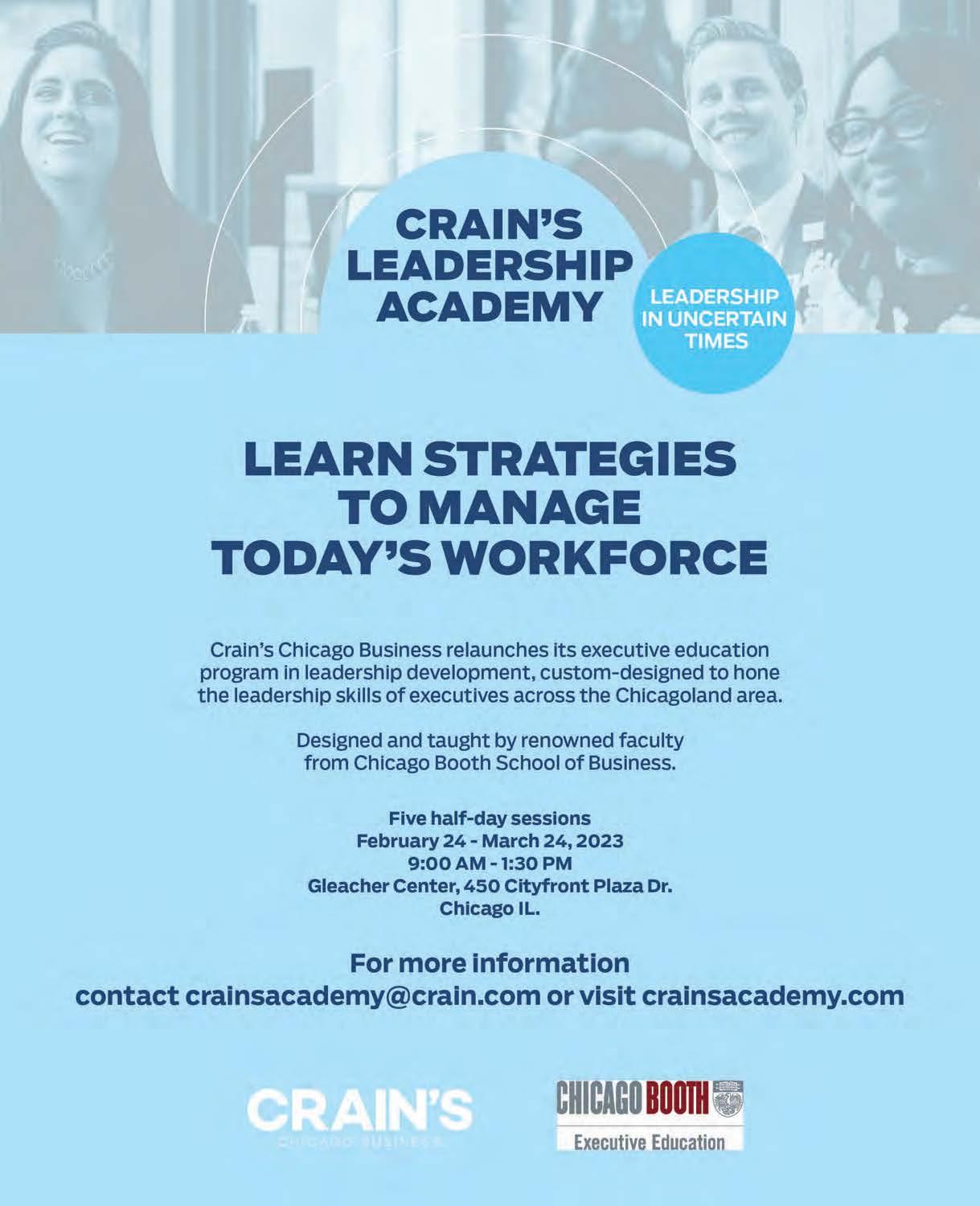
Claudia Hippel, Bridget Sevcik, Laura Warren
Sales administration manager Brittany Brown
People on the Move manager Debora Stein
Digital designer Christine Balch
Keith E. Crain Chairman
Mary Kay Crain
KC Crain President/CEO
Chris
Robert Recchia Chief nancial o cer
Veebha Mehta Chief marketing o cer
G.D. Crain Jr. Founder (1885-1973)

Mrs. G.D. Crain Jr. Chairman (1911-1996)
For subscription information and delivery concerns please email customerservice@ chicagobusiness.com or call 877-812-1590 (in the U.S. and Canada) or 313-446-0450 (all other locations).
efit from affordable access to reliable care for family members.
Without such access, we are not making progress. Staying at home to run a business while caring for family will hold women entrepreneurs back as unstructured contacts with co-workers, customers and colleagues in the eld are crucial for ideation, execution and scaling in the most unexpected ways.
Appreciation for women entrepreneurs starts by talking about the very things their businesses provide—not focusing on old systems and structures that exclude them. Chicago can be the city that leads this conversation and innovates solutions that make success possible for even more women entrepreneurs.
CRAIN’S CHICAGO BUSINESS • J ANUAR Y 23, 2023 11
President/CEO KC Crain
Vice chairman
Crain Senior executive vice president
CHICAGO BUSINESS YOUR VIEW Continued
GETTY
IMAGES
Amazon delays West Side warehouse opening
Expected to employ 500 people, the warehouse is sitting idle amid a broader retrenchment by the area’s largest private employer
BY ALBY GALLUN
e building is nished, the trees are planted and the parking lot is striped. But you won’t see any people or trucks at the new Amazon warehouse in Chicago’s West Humboldt Park neighborhood.
Amazon had planned to hire as many as 500 people at the 140,000-square-foot distribution center, which was expected to open at the end of 2022. But the e-commerce giant has put that plan on hold. Now, it says the facility won’t open until late this year.
e decision represents another step back for Amazon, which went on a real estate and hiring binge here and across the country in 2020 and 2021. More recently, the Seattle-based company has been closing distribution centers or postponing plans to open them, an acknowledgement that it overexpanded during the pandemic. Earlier this month, Amazon said it would cut 18,000 jobs, about 1% of its workforce, mostly white-collar employees.
e move also represents a setback for Chicago’s West Side, where residents were counting on an economic boost as Amazon ramped up hiring at the warehouse. Some local activists argue that Amazon hasn’t been fair or transparent about its hiring plans, and they question the company’s commitment to hire locally.
“People in our community are looking for jobs, and Amazon keeps stringing us along,” said Edie Jacobs, director of Get to Work, a jobs placement program in Chica-
go’s Austin neighborhood.
Amazon lifted the hopes of many in the area when it bought the property at West Division and North Kostner streets in June 2021, in the midst of the company’s rapid growth spurt.
“In addition to bringing much-needed jobs and opportunity for under- and unemployed local residents, it will also inspire renewed hope to already disadvantaged neighborhoods further recently ravaged by the economic shutdowns caused by the COVID-19 pandemic,” Ald. Emma Mitts, 37th, who represents the neighborhood, said at the time.
PULLING BACK
Amazon, which paid nearly $38 million for the property, spent many millions more—a company spokeswoman declines to say how much—building the warehouse. But the building is eerily quiet today, with temporary fencing blocking entrances to the property. e company hasn’t installed its logo on the building, but the structure is distinguishable by a pale blue band along its roo ine, an element found at other Amazon properties.
e building is a delivery station, where semi-trucks drop o packages to be processed and loaded onto vans headed for customer’s homes.
“ e facility is slated to open late this year,” the Amazon spokeswoman wrote in an email. “ e hiring process will not begin until closer to the building launch. Any hiring events for this site will be hosted in the Hum-
boldt Park neighborhood.”
Amazon has grown so quickly over the past few years that it passed Advocate Aurora Health (now Advocate Health Care) as the Chicago-area’s largest privatesector employer, with 27,000 employees at the end of 2021, up from 16,620 a year earlier, according to Crain’s research. Last October, it disclosed plans to hire 3,500 more people in Illinois. Amazon has opened new distribution centers throughout Chicago and its suburbs to build out the company’s delivery network and speed up delivery times.
But it has taken steps to pull back, too. Last year, Amazon closed small warehouses in Mundelein and Elgin and dropped plans for new ones in Crystal Lake and Homan Estates. e Amazon spokeswoman described the change of plans for the West Humboldt Park location as nothing unusual.
“It’s common for us to adjust launch timetables based on capacity needs across the network,” she wrote. “I will provide an update on our speci c launch timing at a later date.”
e company has not postponed the opening of any other distribution centers in the Chicago area, according to the spokeswoman. In addition to the West Side facility, Amazon plans to open one other property in Illinois this year, a delivery station in North Pekin, she wrote.

Amazon’s plans in West Humboldt Park attracted the attention of community activists, who pressed the company to hire lo-
cally at high wages and sign a socalled community bene ts agreement. One group demanded that Amazon pay new workers $28.60 per hour—about $10 more than its starting wage—pick up a share of property taxes from homeowners nearby, and build a community training and recreation center in the neighborhood. But Amazon never signed an agreement.
LACK OF TRANSPARENCY
Amazon built the warehouse in a federal opportunity zone, an area that entitles investors to tax breaks, but the company received no subsidies from the city for the project.
Now, Get to Work and another group, Black Workers Matter, are criticizing Amazon for not following through on its plans in West Humboldt Park and for keeping them in the dark. ey say the company has encouraged residents in the neighborhood to
apply for jobs at other local Amazon facilities for the time being, but is making it hard for them. It has directed them, for instance, to a hiring event at a Skokie hotel, a di cult place to get to for many residents.
e two groups are holding a news conference at the warehouse tomorrow to call out Amazon.
“ ey’re not being straight with their story,” said Dan Giloth of Black Workers Matter. “ ey’re not transparent.”
Ald. Mitts, meanwhile, is preaching patience. In a statement, her o ce said she “continues to be staunchly supportive of the forthcoming Amazon facility, and notably is in collaborative communication with (Amazon’s) regional policy and development teams regarding the process moving forward. Rest assured that this Amazon distribution center is scheduled to open during 2023.”
Logistics firm inks deal at former Gallagher HQ
BY DANNY ECKER
One of the Chicago area’s fastest-growing companies is planting its ag in the former Arthur J. Gallagher headquarters in Itasca, notching a key victory for the New York real estate investor that bought the highly vacant property last year.
AIT Worldwide Logistics has leased nearly 57,000 square feet at 2 Pierce Place in the northwest suburb, where it will relocate its headquarters later this year from a nearby industrial building at 701 N. Rohlwing Road it has called home since 1997, the company con rmed. e new deal includes AIT signage on the 27-story building’s exterior and will nearly double the roughly 30,000 square feet of corporate o ce space it occupies today.
e move makes AIT stand out from the crowd as a company expanding its o ce footprint, growth that belies the broader trend of o ce users shedding unwanted
space amid the pandemic-induced rise of remote work. O ce downsizing has pummeled landlords, who will collectively celebrate AIT’s deal while they struggle with record-high vacancy. It’s especially good news for the venture of New York-based Sovereign Partners that bought Two Pierce Place a year ago at a steep discount with a plan to re ll it with tenants.
“After more than four decades in business, and immense growth to more than 100 locations around the world, we’re looking forward to expanding our roots in the Chicago area,” AIT Executive Chairman and CEO Vaughn Moore said in a statement. “ is strategic relocation will provide our teams with the collaborative space and resources they need to best support our global customers.”
RESTRUCTURING
AIT did not disclose terms of the new lease, but Moore’s statement said he expects the building to serve as the company’s global
headquarters “for the next one to two decades.”
AIT, which provides services that help companies around the world with their supply chain transportation needs, will move to the new o ce as part of larger restructuring of its local real estate. e company is also building a new warehouse property in Palatine, where it will move its operations team from the Rohlwing building and a facility it occupies in nearby Wood Dale.
Moore said in the statement that AIT chose Two Pierce Place for its updated tenant amenities and the high visibility its signage will get overlooking the intersection of Interstate 290 and the Elgin-O’Hare Tollway. e company also wanted to recommit to Itasca and “avoid uprooting commutes and other aspects of dayto-day living for our teammates,” Moore said in the statement.
AIT’s growing headcount prompted the need for more ofce space, even though some of
its 437 full-time Chicago-area employees work remotely some or all of the time. e company grew its revenue by 400% over a ve-year period to $2.1 billion in 2021 through a combination of acquisitions and organic growth. at rise landed the company at No. 33 on Crain’s most recent list of the Chicago area’s 50 fastest-growing companies. Six other logistics-related rms made that list, as companies grappling with supply chain issues since the start of the COVID-19 pandemic have turned to rms like AIT to help.
BETTING BIG
AIT becomes the rst prominent new tenant to sign on at Two Pierce Place since Sovereign bought the building for $24 million in January 2022. Sovereign’s purchase price was a fraction of the roughly $84 million that Johns Creek, Ga.-based Piedmont Ofce Realty Trust, then-known as Wells REIT, paid for the property in a 2006 sale-leaseback deal with insurance broker Gallagher, which leased more than 60% of the building through a 2018 expiration date.
After Gallagher moved out,
Piedmont spent an estimated $5 million to $10 million renovating and updating the building—which was purpose-built for Gallagher in 1991 and is part of the 300-acre Hamilton Lakes Business Park— hoping to lure new users. But the pandemic thwarted that e ort, and Piedmont sold the property to Sovereign when it was just 40% leased, according to real estate information company CoStar Group.
Buying a building with around 300,000 square feet of available ofce space coming o of a two-year stretch in which companies collectively vacated a staggering 2.8 million square feet of o ces across the suburbs is a gutsy bet on the market’s post-COVID revival. But Sovereign is betting it can win over new tenants like AIT as companies ock to buildings with the most updated amenities to help compel employees to show up rather than work from home.
A Sovereign spokesman did not respond to a request for comment.
JLL brokers Eric Kunkel and Steve Spinell negotiated the lease on behalf of AIT. Rob Lundin and John Norris of Newmark oversee leasing for Sovereign.
12 JANUARY 23, 2023 • CRAIN’S CHICAGO BUSINESS
1260 N. Kostner Ave
AIT Worldwide Logistics, one of the Chicago area’s fastest-growing rms, will nearly double its Itasca o ce and generate some leasing momentum for the building
ALBY GALLUN
BANKING
First Bank Chicago proudly announces the promotion of Bill McGowan to Chief Lending Of cer for our Commercial and Industrial banking teams. In this executive role, Bill leads a diverse team of Commercial Banking professionals including Large Corporate, Middle Market and Treasury Management divisions. With over 30 years of banking expertise, Bill is responsible for our growth and expansion initiatives in the Chicago suburban marketplace. He joined the First Bank Chicago team in 2021.
BANKING
First Bank Chicago, Northbrook
First Bank Chicago, one of the top ve privately held banks in Chicagoland, is pleased to welcome Vincent Laughlin as SVP, Commercial Real Estate. In this role, Vince will support the Bank’s growth strategy and is responsible for new business development and relationship management in the CRE portfolio. He has held a variety of roles focused on leveraging his commercial banking expertise. Vince brings over 25 years of banking excellence and comes to us from MB Financial/Fifth Third Bank.
HEALTH CARE
Saint Anthony Hospital, Chicago
Saint Anthony Hospital welcomes Raquel Prendkowski as Vice President of Patient Care Services and Chief Nursing Of cer to provide executive leadership for clinical excellence, patient safety and case management, also responsible for standards of care and practice, policies, procedures and programs to ensure quality patient care and patient satisfaction.
Prior to joining Saint Anthony Hospital, Raquel served in nursing leadership at Methodist Hospital in Gary, Indiana and Sinai Chicago.

HEALTH CARE
Saint Anthony Hospital, Chicago


Saint Anthony Hospital announces the promotion of Ella Li to Assistant Vice President, Ancillary Services, and Michael Sellers to Assistant Vice President, Facilities Management. Ella Li previously served as Pharmacy Director after joining Saint Anthony Hospital in 2014. In addition to pharmacy, in her new role she will be responsible for overseeing the Cardiology, Laboratory, Radiology and Respiratory departments.
Michael Sellers has been with Saint Anthony Hospital for 10 years serving in the role of Director of Security and Emergency Management. He will also oversee hospital Facilities, Material Management, Telecommunications and Transportation.
LAW
LAW
Christine E. Hollis

joined Marshall, Gerstein & Borun LLP as Chief Talent & Diversity Of cer. Christine is responsible for recruiting new associates and lateral partners as well as developing and implementing programs to enhance the professional development and diversity of the rm. Christine earned her undergraduate degree from Spelman College and her Master of Science degree from DePaul University. She is a 2022 recipient of the Women Worth Watching award by Pro les in Diversity Journal.
LAW
Marshall, Gerstein & Borun LLP, Chicago
Marshall, Gerstein & Borun LLP elected Kelley S. Gordon as partner. As a litigator, Kelley handles enforcement of trademark, copyright, and patent related matters and practices before the Trademark Trial and Appeals Board, United States District Court, and the United States International Trade Commission. She also focuses on helping her clients manage and enforce their global and domestic trademark and copyright portfolios, providing guidance on global ling strategies and maintenance goals.
Marshall, Gerstein & Borun LLP elected Kate Nuehring Su to partner. Kate focuses her practice on domestic and international patent prosecution and assists companies in the medical device, mechanical, consumer product, design, and femtech industries. She also provides opinions on the validity and enforceability of patents and freedom-to-operate issues. Kate earned her law degree from Northwestern University and holds a bachelor’s degree in biomechanical engineering from Stanford University.
LAW
Marshall, Gerstein & Borun LLP, Chicago
Marshall, Gerstein & Borun LLP elected Noah K. Tilton to partner. Noah is a computer scientist and patent attorney whose practice is focused on providing strategic intellectual property counsel to clients innovating in cutting-edge, multidisciplinary technologies such as machine learning and arti cial intelligence. Noah has helped secure software and hardware intellectual property for universities, early-stage startups, research institutions, and Fortune 100 companies.
LAW
BANKING
First Bank Chicago, Northbrook



First Bank Chicago, one of the top ve privately held banks in Chicagoland, is pleased to welcome Silvia Chen as Vice President, Director of Accounting Operations. In this new role, she is responsible for the short & longterm development and maintenance of accounting initiatives across the nancial platform. She is the primary point of contact for all accounting systems. Silvia brings 10+ years of experience in the nancial service industry and comes to us from North Shore Trust and Savings.


INFORMATION / DATA TECH
Wavicle Data Solutions, Chicago
Wavicle Data Solutions is pleased to announce Raj Nalla as Financial Services Practice Leader. Nalla works with banking, capital markets, and insurance clients to maximize value for their data analytics investments. From frontline operations to internal audit, Nalla empowers clients through scalable, self-service data analytics that accelerate time to value and reduce costs. Nalla’s 20 years of experience includes leading global teams at EY where he advised C-suite nancial services executives.

Marshall, Gerstein & Borun LLP, Chicago
Marshall, Gerstein & Borun LLP elected Robert S. Jacobson as partner. Robert is a patent attorney and joined the rm as a Technical Specialist over eight years ago. Robert provides comprehensive counsel in a number of technological areas, including digital communications, wireless devices, telephony, imaging, cloud computing, machine learning, and control systems. He prides himself on being able to guide his clients to better outcomes and creative solutions through the use of data analytics.




Willkie Farr & Gallagher LLP, Chicago
Willkie Farr & Gallagher, Chicago, is pleased to announce that Skyler J. Silvertrust and Aaron J. Hersh have been elected to partner.
Skyler is in the Litigation Department. His practice focuses on complex commercial disputes and government/regulatory investigations and spans a range of industries including aviation, nancial services, telecommunications, manufacturing, real estate and construction.
IA Business Advisors, Elgin

IA Business Advisors is proud to welcome Gregg-Brooke Koleno and Billy Banks as new partners in their Illinois of ces. Gregg joined IA in 2019 after a successful 20-year career building operational infrastructure for growth for multiple companies.
Gregg will lead IA’s consulting operations in our organizational and operational improvement practices in IL and DE.


Billy is joining IA after a successful 25-year career starting, building, leading, and selling businesses ranging from a few to several thousand employees. Billy will lead IA’s organizational development, C-Suite practices, and proprietary S.M.A.R.T. Leadership Coaching practice, as well as spearheading the opening of IA’s rst downtown Chicago of ce.

PHILANTHROPY
Executive Service Corps, Chicago
The Executive Service Corps is proud to announce our 2023 Board of Directors Chairperson, Terra Winston, Principal of inTerract Consulting. The Executive Service Corps is the premier nonpro t consultancy with the mission of making nonpro ts successful. Terra has worked with leaders from over 40 countries and has dedicated her life to helping knock down the barriers that keep so many good people from reaching their fullest potential. In addition to Terra’s exceptional board leadership, Rachelle Jervis continues her seventh year as President and Chief Executive Of cer. Thanks to the generosity of donors, the Executive Service Corps provides services to hundreds of nonpro t organizations impacting millions of people each year.

ENERGY
SunVest Solar, LLC, Chicago
Bram Walters has been named CEO of SunVest Solar, LLC. In this role, Walters will support the company’s rapid growth and the development of its industry-leading pipeline of distributed generation solar projects. Walters brings diverse business experience in renewable energy and infrastructure. Prior to joining SunVest, Walters was co-founder and partner at Euclid Capital and held increasingly senior positions at Forum Equity Partners, Standard Chartered Bank, National Bank Financial and IBM.
INSURANCE
Vericity, Inc., Chicago
Vericity, Inc., a leading provider of technology enabled life insurance products and distribution, welcomes Melissa Balsan as Executive Vice President and Chief Marketing Of cer. She will oversee integrated marketing for Vericity’s method patented life insurance offerings through its subsidiaries, eFinancial and Fidelity Life, playing a pivotal role in future growth plans.
An Adrian College alumna, Balsan has held leadership roles at GoHealth, Endurance Warranty Services, and CareerBuilder.com.



LAW
Marshall, Gerstein & Borun LLP, Chicago






Marshall, Gerstein & Borun LLP elected Shannon Hughes Mastick to partner. Shannon is a registered patent attorney who focuses her practice on obtaining and protecting IP rights in the areas of software and automation, including machine learning and other types of arti cial Intelligence (AI). Shannon serves as the vice chair of the U.S. patents committee of the Intellectual Property Law Association of Chicago. She earned her law degree and her B.S. in physics from the University of Notre Dame.
Aaron practices in the Litigation Department, representing clients at trial and in appeals at the federal and state levels, with a focus on antitrust, trade-secrets and restrictive covenants, and shareholder, corporate governance and duciary litigation.



PROFESSIONAL SERVICES
West Monroe, Chicago
Jodi Bednar has been named West Monroe’s Chicago of ce leader.




Since joining West Monroe in 2014, Bednar has been a leader in our Energy & Utilities practice, most recently heading up a Chicago of ce E&U team that serves many of the industry’s top companies.
She takes the reigns of the rm’s headquarters and largest of ce, with more than 1,100 people and a longstanding reputation as a top employer in the Chicagoland area.
PROFESSIONAL SERVICES
Project Management Advisors, Chicago

PMA is thrilled to announce that Chris Valenti has joined our rm as Vice President and GM of the Chicago of ce. With 35+ years of industry experience, Chris takes the helm to accelerate growth in the dynamic Chicago market. He was previously a Principal of Valenti Interests, LLC and Vice President of Valenti Builders, Inc, and serves on the board for The Chicago Public Library, WTTW broadcasting and the Big Shoulders Fund. He holds an MBA from the Kellogg School of Management at Northwestern.

PEOPLE ON THE MOVE Advertising Section To place your listing, visit
or, for more information, contact Debora Stein at
/ dstein@crain.com
www.chicagobusiness.com/peoplemoves
917.226.5470
LAW FIRM Silvertrust Hersh
CONSULTING
MANAGEMENT
Koleno Banks
Li Sellers
Winston Jervis
Marshall, Gerstein & Borun LLP, Chicago
Marshall, Gerstein & Borun LLP, Chicago
First Bank Chicago, Northbrook
Shareholder sues Abbott leaders over factory issues
The complaint accuses directors and executives of omitting known safety violations at the company’s now-infamous baby formula plant in Sturgis, Mich.
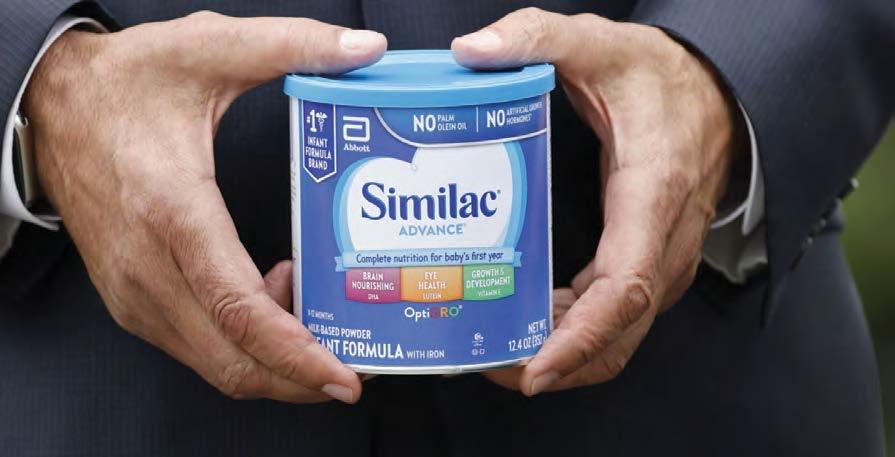 BY KATHERINE DAVIS
BY KATHERINE DAVIS
An Abbott Laboratories shareholder has led a lawsuit against leadership at the North Chicago company, alleging directors and executives concealed known safety issues at the company’s now-infamous baby formula manufacturing facility for at least a year in a “scheme to maximize revenues” and maintain its stock price.
e lawsuit, led by Larry Huetteman on Jan. 18 in U.S. District Court for the Northern District of Illinois, accuses Abbott leadership of violating duciary responsibilities under the Illinois Business Corporation Act. It also accuses directors and executives of engaging in insider trading when several sold company stock worth a combined $130 million after leadership was aware of contamination issues at its Sturgis, Mich., plant.
e suit names several Abbott directors and executives as defendants, including CEO Robert Ford. e complaint says wrongdoing by Abbott directors and ofcers began Feb. 1, 2021, and ran through June 8, 2022.
e lawsuit stems from widely reported safety issues at Abbott's Sturgis formula factory. Last year, the company was at the center of a nationwide formula shortage after it recalled products following complaints of infants being sickened by Salmonella newport and another type of bacteria called Cronobacter sakazakii. Abbott has said it did not nd any
de ni tive link between its products and the reported illnesses.
e recall came the same day that the U.S. Food & Drug Administration launched an investigation into the plant and temporarily shut it down. At the time, Abbott characterized the recall as “voluntary” and “proactive” in a press release and did not mention the FDA investigation.
‘UNSANITARY CONDITIONS’
At a hearing before federal lawmakers months later, FDA chief Dr. Robert Cali testi ed that the agency found “egregiously unsanitary conditions” in Abbott’s Sturgis plant during an inspection in September 2021, ve months before the company recalled formula.
But the lawsuit claims Abbott executives were aware of the plant’s issues even earlier—in February 2021, when it received a whistleblower complaint about contamination issues at the Sturgis facility. Despite known issues with the plant, Abbott directors did not implement changes or systems to improve operations at the facility, or notify shareholders in company lings or in earnings calls of the ongoing problems and risks they posed to the business, according to the complaint.
By omitting the issues to shareholders and the public, Abbott in ated its stock price, the complaint says. And when contamination concerns were made public, Abbott’s stock price and formula revenues began to fall.
Abbott’s stock is down 11% over the last year, trading at about $112. It reached a year-low of $95 in October 2022.
“Abbott has also su ered and will continue to su er a loss of reputation and goodwill, and a 'liar’s discount' that will plague the Company’s stock in the future,” the complaint reads.
Attorneys for Huetteman and a representative for Abbott didn't immediately respond to a request for comment.
Huetteman’s lawsuit follows a similar class-action lawsuit led against Abbott in July, which is pending in Illinois district court. Unlike the July suit, Huetteman’s complaint accuses Abbott executives of insider trading between February 2021 and June 2022.
Huetteman’s suit claims Abbott leaders sold a combined $130 million of stock when the company’s stock price was at or close to its peak. In some cases, sales occurred just a few weeks before the recalls began, the
complaint says.
“ ese insiders had direct and unfettered access to information about Sturgis violations and the incident and safety reports concerning Sturgis, its shutdown, product recalls and federal law violations,” the suit reads.
MOUNTING PROBLEMS
e lawsuit also claims that Abbott executives violated duciary duties and sections of the Securities Exchange Act of 1934 by causing “Abbott to repurchase hundreds of millions of dollars of its own stock in the open market in the last quarter of 2021 and rst quarter of 2022 at arti cially in ated prices.” In a December 2021 ling with the U.S. Securities & Exchange Commission, Abbott disclosed that its board of directors had recently authorized a repurchase share program of up to $5 billion.
According to the complaint, that “caused Abbott to waste hundreds of millions of dollars
on repurchasing its own stock.” e lawsuit is seeking that Abbott take action to reform and improve its corporate governance and internal procedures to protect shareholders from a repeat of the allegations. e suit also asks that Abbott shareholders be able to nominate at least two candidates for election to the company’s board.
With this latest lawsuit, Abbott’s baby formula woes continue to mount. Aside from being sued by shareholders, Abbott faces more than 150 other lawsuits from consumers over alleged problems with its baby formula. ere is a group of classaction and other lawsuits over the Sturgis contamination issue. Additionally, there’s a growing group of lawsuits alleging Abbott and competitor Mead Johnson’s cow milk-based formulas are unsafe and sometimes deadly for premature infants. As of today, there were 154 suits under the multidistrict litigation group.
Allstate's miserable year of insuring cars ends fittingly
BY STEVE DANIELS
Allstate's stock dropped to its lowest level in nearly three months on news that its core auto insurance business remains deeply in the red despite an unprecedented spate of rate hikes around the country.
e Northbrook-based insurer issued a warning Jan. 19 that fourth-quarter results will be ugly when released on Feb. 1.
Allstate nished 2022 incurring more than $1.10 in claims and expenses for every dollar of premium it collected from auto policyholders. at followed a fourth quarter in which the ratio was more than $1.12 for every dollar of premiums. Allstate hasn't turned a quarterly underwriting pro t in its auto unit since the second quarter of 2021.
For years, Allstate has been the country's most pro table major
auto insurer. In 2022, it will rank near the bottom in that category. e company in the fourth quarter, as in several previous quarters, was forced to add to reserves for claims payouts because it had previously underestimated what those costs would be.
Re-estimates totaled $280 million in the quarter, with $180 million of that emanating from an "increase in personal auto insurance claim frequency attributable to prior accident years," according to Allstate's Securities & Exchange Commission disclosure. Essentially, that means the company experienced more accidents from before 2022 that it ended up having to cover than it expected. e other $100 million was tied to insuring ride-share drivers and costs related to states Allstate is exiting.
e losses from negative reserve experiences have some
analysts questioning whether Allstate has a good grasp on trends in its business. It's struggled to navigate the post-COVID era, as rivals like Progressive turned the corner on pro tability in the middle of 2022 without having to hike rates as dramatically as Allstate.
INDUSTRY STRUGGLES
All insurers have struggled with the unexpectedly quick return to near-normal driving levels beginning in mid-2021 and in ationary trends in used cars, auto parts and medical costs.
Also adding to the gloom was an estimated $478 million in losses from Winter Storm Elliott, the so-called bomb cyclone that hammered most of the U.S. in the days leading up to Christmas.
Allstate CEO Tom Wilson said last month that the rate hikes would continue into 2023. Less
than a month into the new year, the insurer announced it would increase rates on most Illinois drivers it insures by an average of 7.6%, according to a ling with the Illinois Department of Insurance. at comes after auto rate increas-
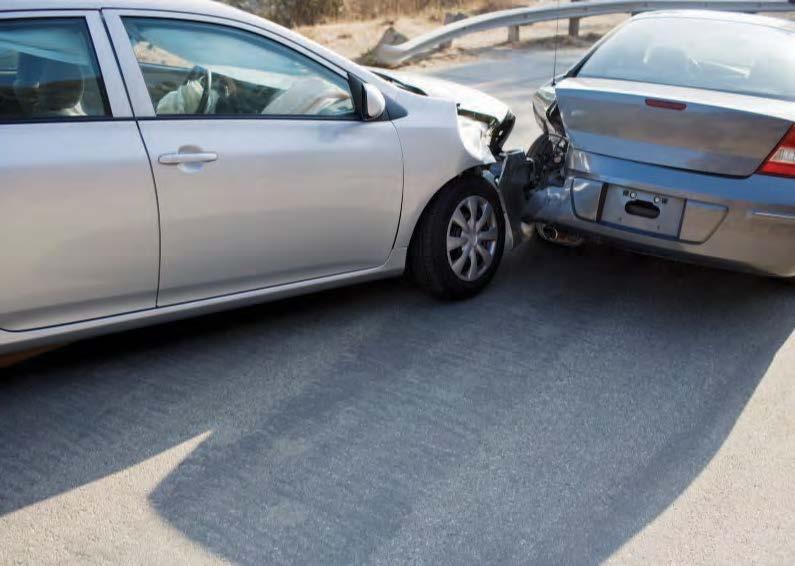
es in 2022 that will add $4.1 billion, or nearly 17%, to revenue in that business line once they're all in effect, the company said on Jan. 19.
Allstate stock closed that day down 5.9% to $124.64 on more than 2.5 times average volume.
14 JANUARY 23, 2023 • CRAIN’S CHICAGO BUSINESS
For years, the Northbrook-based company has been the country's most pro table major auto insurer. In 2022, it will rank near the bottom in that category.
GETTY IMAGES VHT STUDIOS
Allstate nished 2022 incurring more than $1.10 in claims and expenses for every dollar of premium it collected from auto policyholders.











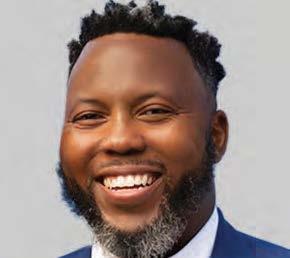



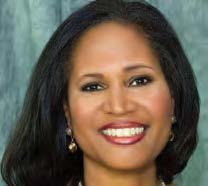
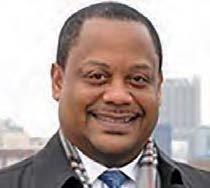

A DISCUSSIONON CHICAG O’S TO P ISSUES BUY TICKETS TO DAY! Chicago’s leading mayoral candidates sit down with Crain’s Political Repor ter Greg Hinz and Assistant Managing Editor Cassandra West. ChicagoBusiness.com/Mayor23 WEDNESDAY, FEB. 1 | 6–8 PM VENUE SIX10 - 610 S. MICHIGAN AVE. Illinois State Rep. Kam Buckner U.S. Rep. Jesus “Chuy” Garcia Ja’Mal Green Cook County Commissioner Brandon Johnson Alderman Roderick Sawyer
Vallas PRESENTING SPONSOR SUPPORTING SPONSOR Alderwoman Sophia King
Paul
Report predicts billions in fuel tax revenue losses

A union-tied research group is pushing for a mileage tax to shore up funds if Illinois meets its EV goals
BY NIKA SCHOONOVER
SPRINGFIELD—Despite Illinois’ e orts to smoothly integrate electric vehicles into the state’s economy, a new report from the Illinois Economic Policy Institute is warning of a potential steep decline in transportation revenue as the process of electri cation accelerates.
e primary issue is motor fuel taxes, which will see a signi cant drop as more electric vehicles make their way to the road and fewer people ll their cars with gas.
Since motor fuel taxes make up the backbone of state funding for road and bridge projects, ILEPI, which has strong ties to organized labor, warned in its report that new revenue sources will have to be identi ed to ensure the state’s 10-year capital improvements plan remains on track.
“ ere’s absolutely a bene t to having EVs but it will ultimately have a strong impact on transportation funding,” Mary Tyler, the author of the report, said in an interview. “It’s something that I don’t think is talked about enough.”
Motor fuel tax is the state’s leading source of transportation funding and makes up 52% of Illinois’ total transportation revenue and 82% of its contributions to the federal highway trust fund.
e report’s main policy recommendation is implementing a vehicle miles traveled, or VMT, fee which would replace the existing motor fuel tax with a fee determined by the number of miles a car travels on Illinois roads. e idea has been oated in the past, including by Gov. J.B. Pritzker in an interview with e Daily
Herald during his initial gubernatorial campaign in 2018.
“In some states (such as Oregon), they have done tests recently for a VMT tax because we have more and more electric cars on the road, more and more hybrids, and because gas mileage is rising,” then-candidate Pritzker told the outlet. “It’s only fair if you’re on a road and traveling on that road that you should pay your fair share.”
In his four years as governor, however, Pritzker has not made a serious legislative push for a VMT, and spokesperson Alex Gough said in an email Monday he has no plans to do so.
“Gov. Pritzker never proposed a vehicle mileage tax and has no intention of doing so now,” Gough said in a statement. “What he said is that other states are studying the issue and it would be worthwhile to look at the results of those studies.”
It’s an issue that ILEPI says will become more pressing as the state moves toward its goal of putting 1 million electric vehicles on state roads by the end of the decade—a goal written into law with the passage of the Climate and Equitable Jobs Act in 2021.
Even before this promise was made, Illinois was seeing a yearly increase in electric vehicles. From 2017 to 2021, electric vehicle registrations have increased from 8,255 to 36,482. e most recent data from the Illinois Secretary of State’s o ce shows that, as of December 2022, there are 57,311 electric vehicle registrations.
“Looking at the growth we’re seeing, we’re seeing it grow at a faster rate than what we ever have before,” Tyler said.
According to Tyler’s estimate, Illinois would have to add 119,000 electric vehicles every year in order to meet their goal of one million by 2030. If that came to fruition, the state would lose $765 million in combined sales and motor fuel tax when accounting for added EV fees. Counting federal revenues, that gure would jump up to $1.1 billion.
OTHER OPTIONS
Electric vehicles aside, Tyler said fuel-e cient vehicles pose an additional threat to the state’s transportation revenue. Roughly 10% of registered vehicles in Illinois are electric, while the rest of the 11 million are increasingly becoming more fuel-e cient.
“If you take a look at the picture of all the vehicles on the road, as newer vehicles come out that are more fuel-e cient, that means we’re just having overall, on average, a more fuel-e cient eet,” Tyler said.
Tyler calculated that the total state and federal revenue loss over the next decade would be about $4.3 billion.
at loss would be especially threatening to the back half of Pritzker’s historic 10-year, $45 billion capital infrastructure plan known as Rebuild Illinois.
e roads-and-bridges portion of the 2019 program was made possible in large part by doubling the state’s motor fuel tax, which hadn’t seen an increase since 1990, then tying it to in ation in subsequent years. e infrastructure plan also increased Illinois’ annual electric vehicle registration fee by $100 annually.
Tyler said while the fee hike helped replace some of the lost revenue, it won’t go far enough.
“As soon as the change can be made, the better,” Tyler said. “Even to this day, there are EVs on the road that are not paying as much as they would be on motor fuel tax. So there is an impact, it’s
just right now the impact isn’t as big as what it will be in the future.”
In response to questions about revenue declines, Gough, Pritzker’s spokesperson, said Rebuild Illinois “is a six-year plan that relies on a variety of revenue streams to ensure the state can continue investing in infrastructure once the plan is complete.”
Other policy areas to explore, Tyler suggests, include increasing existing registration fees even further, implementing a separate hybrid vehicle fee and creating an electric vehicle-speci c kilowattper-hour fee.
Nika Schoonover writes for Capitol News Illinois, a nonpro t, nonpartisan news service covering state government. It is distributed to more than 400 newspapers statewide, as well as hundreds of radio and TV stations. It is funded primarily by the Illinois Press Foundation and the Robert R. McCormick Foundation.
Advocate plans to develop Lincoln Park outpatient center
BY KATHERINE DAVIS
Advocate Health Care, the Chicago area’s largest health system, plans to open a new outpatient center in Lincoln Park.
e health system, part of Advocate Health since the late 2022 merger of Advocate Aurora Health and Atrium Health, detailed plans for the new $42 million center in a recent application led with the Illinois Health Facilities & Services Review Board, which has to approve the project.
Advocate intends to open the 41,000-square-foot facility in a shopping center at 1435-1471 W. Webster Ave. e complex is home to Barnes & Noble and Regal Cinema locations.
According to its application, Advocate will o er primary care and specialty care services. It will
also o er immediate care, physical therapy, lab and imaging services. If approved, Advocate expects the project to be complete in April 2025. e center would join 250 Advocate outpatient centers in the region.
“Expanding access to care is a pivotal step toward improving the health and well-being of our patients and communities,” Advocate Health Care said in a statement to Crain’s.
CHAIN REACTION
Advocate is the latest large health system to propose plans for a new outpatient center. Many hospital chains, including Northwestern Medicine and Rush University System for Health, have been doubling down on their outpatient strategies as they aim to reach more patients across
Chicago neighborhoods and suburbs.
Northwestern revealed plans for an $83 million outpatient center in Oak Brook last year, and Lurie Children’s Hospital of Chicago is planning to bring a $56 million outpatient care center to Schaumburg.
Just last week, Rush opened a new 10-story, $450 million outpatient facility at 1520 W. Harrison St., where it will provide cancer, neuroscience and digestive disease care.
Advocate’s application to build the new Lincoln Park outpatient center comes shortly after its parent organization Advocate Aurora Health nalized its merger with Charlotte, N.C.-based Atrium Health in a deal that created the fth-largest nonpro t health system in the country and con-
solidated the combined systems’ headquarters to Charlotte.
Prior to the deal, Advocate Aurora Health was co-headquartered in Downers Grove and Milwaukee. Despite the headquarters move, Advocate Health has said it intends to maintain a
strong organizational presence in Chicago and Milwaukee and has plans to expand with a new institute for health equity in Milwaukee. Advocate Health operates 67 hospitals across the country, 10 of which are in Illinois, according to its website.

16 JANUARY 23, 2023 • CRAIN’S CHICAGO BUSINESS
largest health system in Chicago intends to open a $42 million primary and specialty care center on the North Side in 2025
The
BLOOMBERG
BLOOMBERG
Schaumburg, O’Hare office landlords look to cash out
test investor con dence in the future of suburban Chicago o ce properties with e ects of the COVID-19 pandemic fading but economic recession fears on the rise

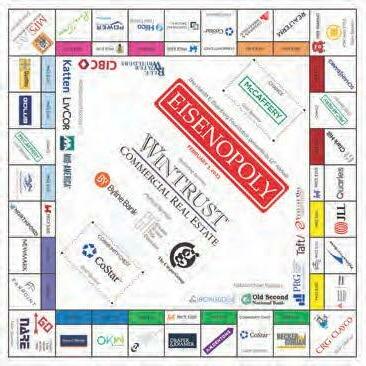 BY DANNY ECKER
BY DANNY ECKER
The owners of two suburban Chicago office complexes are kicking off 2023 with a hunt for buyers, hoping to defy a market that has gone cold lately with rising interest rates and weak demand for workspace.

In the larger of the two offerings, Skokie-based American Landmark Properties has hired brokerage Cushman & Wakefield to sell Schaumburg Towers, a pair of 20-story buildings at 1400 and 1450 American Lane in the northwest suburb, according to a marketing flyer. And in a separate listing, Sandy, Utah-based Bridge Investment Group has tapped Jones Lang LaSalle to seek a buyer for the two-building O’Hare International Center complex at 10255 and 10275 Higgins Road in Rosemont.
Neither of the properties has a formal asking price, but both will test how investors feel about the future of large suburban office properties as effects of the COVID-19 pandemic fade and economic recession fears rise. Both owners bought their buildings in 2018 and have invested heavily in updates ever since, improvements that helped them retain and land new tenants. Yet suburban office landlords are still
grappling with record-high vacancy as companies embracing remote work shed unwanted office space. That ugly backdrop and the rising cost of financing deals drove down sales of office buildings nationwide last year by 12% year over year through November, according to research firm MSCI Real Assets.
Sources familiar with the Schaumburg Towers listing expect bids to come in between $125 and $135 per square foot, or $110 million to $120 million. A sale in that range would be well above the nearly $87 million that American Landmark paid in 2018 for the 890,516-square-foot complex, which sits next to Woodeld Mall. e property at the time was anchored by a 15-year, 300,000-square-foot lease with payroll software specialist Paylocity but remained half-empty.
NEW LEASES
American Landmark since then has pumped almost $19 million into renovations and new amenities, according to the Cushman flyer, which helped it land a slew of new leases—even as demand withered during the pandemic. A 55,000-squarefoot lease with Ally Financial signed in 2021—a rare COVIDera expansion by the company—led a total of 160,000 square feet of new leasing at
BMO wins regulator go-ahead for Bank of the West purchase
BY STEVE DANIELS
e parent of BMO Harris Bank is set to complete its acquisition of Bank of the West on Feb. 1, more than 13 months after the $16.3 billion deal was announced.
Toronto-based BMO Financial Group won approval from the Federal Reserve and the U.S. O ce of the Comptroller of the Currency last week.
e deal will make Chicagobased BMO Harris the 15thlargest bank in the U.S. BMO’s U.S. parent will have $287 billion in assets.
BMO Harris is Chicago’s second-largest retail and commercial bank after JPMorgan Chase. e purchase of Bank of the West from French parent BNP Paribas gives BMO Harris a major presence in California, making the nation’s largest state as critical to its future as its Midwestern strongholds in the Chicago area and Wisconsin.
Overall, BMO will have a presence in 32 states.
Veteran Chicago banker David Casper will continue as CEO of BMO Harris and U.S. CEO of BMO Financial.
e approval comes as some

Fed o cials are expressing increasing concern about the growing number of banks with more than $250 billion in assets.


e Fed is launching a review of capital requirements for such banks as some o cials are questioning whether banks of that size can be e ectively managed.



In a statement accompanying the approval of BMO’s deal, Federal Reserve Vice Chairman Lael Brainerd said, “Since we know from experience that even non-complex banks in that range can pose risks to the broadernancial system when they experience nancial distress, I am encouraged that the board is seeking comment on an advance proposal to improve their resolvability through long-term debt requirements and is undertaking a serious review of large bank capital requirements.”
If BMO were to strike such a deal today, it might well have drawn more regulatory scrutiny.
As it is, BMO eased the path to approval with a $40 billion community investment pact with a consortium of fair-lending groups in November.

Bloomberg contributed.
Schaumburg Towers since 2020, according to Cushman.
The buildings combined are now 77% leased with eight years of weighted average lease term, a measurement of tenants’ remaining lease commitments to the property. That is better than the 72% average for suburban office buildings at the end of 2022 and well ahead of the 62% average among top-tier, or Class A, office buildings in the northwest suburbs, according to data from JLL.
INVESTMENTS

American Landmark financed its 2018 acquisition with a $95.5 million senior loan from a venture of Chicago-based Prime Finance, according to Cook County property records. American Landmark at the time also took out a $14.5 million mezzanine loan from Chicago-based Pearlmark Real Estate Partners, according to MSCI Real Assets.
A spokesman for American Landmark did not provide a comment.
People familiar with the Rosemont offering expect the complex to fetch bids close to $70 million, or roughly $130 per square foot for the pair of nine-story buildings.
That would approach Bridge’s total capital investment in the 556,466-square-foot property,

which it bought in 2018 for $64 million. Bridge financed that acquisition with a $50.5 million mortgage from Birmingham, Ala.-based Regions Bank, property records show.
Bridge invested more than $8 million since then on renovation to the lobbies in both buildings and upgrades to tenant amenities, improvements that helped them lease space throughout the pandemic, according to the JLL flyer. The complex is now 83% leased—roughly the same as it was when Bridge bought it—and has 4.5 years of weighted average lease term, the flyer said.
The property at the intersection of Higgins and Mannheim roads is hitting the mar-
ket shortly after the sale of the Pointe O’Hare office building roughly one mile east. A venture of Chicago real estate firm BA Investment Advisors last fall paid about $143 per square foot—just under $39 million, according to Cook County property records—for that 11-story building, which is about 66% leased.
A Bridge spokesman did not respond to a request for comment.
Dan Deuter and Paul Lundstedt of Cushman & Wakefield are marketing Schaumburg Towers on behalf of American Landmark. The capital markets team in the JLL Chicago office is marketing O’Hare International Center.

CRAIN’S CHICAGO BUSINESS • J ANUAR Y 23, 2023 17 February 3, 2023 Purchase your ticke ts today at EisenbergFoundation.org 6:30pm - 11:00pm Wintrust Grand Banking Hall Tick e ts $125
The listings will
Schaumburg Towers COSTAR GROUP
A graduated income tax revival is in the works
eld
Asserting that the second time could be the charm, a veteran Illinois lawmaker is preparing a new e ort to get the state to enact a graduated income tax.
In a phone interview, Sen. Rob Martwick, who represents portions of Chicago’s Northwest Side and adjacent suburbs, said he still believes the state, and particularly middle-class families, need the income and lower property taxes, respectively, that a graduated income tax would bring, even though voters in 2020 rejected a proposed constitutional amendment to do that by about a 10-point margin.
“If you really believe in something, you don’t give up after one loss,” Marwick said. “It’s the right thing to do.”
Martwick said he has not yet drafted enabling legislation for a second referendum and that his version likely would be somewhat di erent that the 2022 proposal, which he sponsored when he was in the Illinois House. e matter could drag on until next year, but Martwick said his hope is to o er a bill as soon as next month and see what support it draws.
“I want to keep the discussion going,” Martwick said.
tax reform but may not want not to deal with this issue at a time when he’s clearly pondering a race for president if incumbent Joe Biden retires.
News that a leading Democrat is gearing up for another try drew immediate strong pushback from Illinois Manufacturers Association CEO Mark Denzler, whose group vigorously opposed the 2020 version.
Raising taxes as the country nears a possible recession “sends a dangerous message to job creators,” including those in the electric vehicle industry that Pritzker is wooing hard with new economic incentives, Denzler said.
PREDICTIONS
Spring eld Republicans have been suggesting for months that Democrats would move to hike taxes after Pritzker’s recent re-election as billions in federal COVID-relief funds dry up. ose predictions may prove prescient, Denzler said. “As Yogi Berra said, it’s déjà vu all over again. . . .We thought we’d see this after the election.”
Denzler did not totally shut the door to a revamped income tax. But the business community will remain opposed at least until it sees “some real spend-
rmed that the senator did talk with Martwick—and that he’s not taken a rm position yet. “ e idea—the policy—is one the Senate president has long supported,” the spokesman said. “At the same time, we all saw the results and the message voters sent.”
A new plan to raise taxes on wealthy Illinoisans—and use at least some of the proceeds to lower taxes on those who are less well o —would almost certainly set o a major furor in Springeld. It also could create a bit of a dilemma for Gov. J.B. Pritzker, who strongly pushed what he call “the fair tax” in the 2020 referendum and has continued to hint that he’s still interested in
ing reform” from the Democratic-majority Legislature, something that in his view has not occurred.
Martwick said he has not discussed his pending new campaign with Pritzker. He did bring it up with Senate President Don Harmon, who did not endorse the idea but said, “OK, le the bill.”
Harmon’s spokesman con-
Martwick said he has not yet decided whether the new graduated tax should be revenue neutral, cutting taxes at the bottom of the scale as much as it raises them at the top, or instead boost the state’s income in dealing with continuing massive debt in the state’s pension funds, which are short more than $130 billion of what’s needed to pay promised bene ts.
Either way, the proposal must guarantee property tax relief in the way the “fair tax” didn’t, Martwick said. “When you look at people leaving the state, the
said Sen. Rob Marwick. “It’s the
vast majority are middle-class people,” with high taxes on their homes a prime reason. To be successful, a new graduated income tax plan must provide property tax relief and deal with the pension problem, he said.
LEGISLATIVE WINS
Democrats have veto-proof supermajorities in both the Senate and House. After a long series of recent legislative successes—including passing a major infrastructure plan, big increases in funding for public schools, expanded abortion rights, criminal-justice reform and earlier this month a ban on assault weapons—a comprehensive tax overhaul is one of the party’s few unful lled priorities.
For Pritzker, who last week attended the World Economic Forum in Davos, Switzerland, passing a graduated income
tax could help him appeal to the Democratic primary base if Biden chooses not to run again. It also would erase his one big political defeat here. But it also could cast him as a tax hiker at a di cult time, depending on the nal details.
One thing has changed for sure since 2020. Hedge fund mogul Ken Gri n, who personally bankrolled much of the campaign against the “fair tax,” has moved himself and his company headquarters to Miami and likely would not be as involved again.
Martwick is best known as a longtime advocate of electing members of the Chicago Board of Education. He now is in his second term in the Senate after moving over from the House and serves as Democratic Committeeman of Chicago’s 38th Ward.
Ariel rebrands, but its value-oriented investment approach isn’t changing
 ARIEL from Page 3
ARIEL from Page 3
appreciated in the market.
Aesop’s tortoise will continue as the rm’s mascot and “slow and steady wins the race” as its motto. But Ariel doesn’t want to convey that it’s static.
“Good outcomes take time,”
Ariel says of its new tagline. “While patience may suggest stasis, such rigorous discipline in fact requires constant, dynamic engagement. We are diligently and continually assessing changing conditions, identifying undervalued opportunities, making connections to glean new insights and setting more ambitious goals.”
e rebranding comes as Ariel
is struggling through a period of underperformance. e agship
Ariel Fund, with $2.5 billion in assets, su ered a negative return of 18.8% in 2022, according to mutual fund ratings rm Morningstar Direct. Its ve-year annualized return ended the year at 4.9%, while its 10-year annualized return is a more impressive 10.0%.
SITTING TIGHT
With $16.2 billion in assets under management at year-end, Ariel has done a good job convincing investors to sit tight. But 2023 is likely to be an important year in terms of improving performance.
e Ariel Fund, launched in
1983, has the longest track record in the mid-cap value category, the rm says.
“ is rebranding project has been in the works for over two years,” Chief Communications O cer Arielle Patrick says in an email. “As is typical of Ariel’s patient approach to everything we do . . . we take our time.”
Over the remainder of 2023, Ariel will continue its extensive overhaul of its website and add an interactive timeline on its 40-year history, among other things, she says.
As to the value investment approach Rogers instituted at his company as a 24-year-old acolyte of legendary investor Warren Bu ett, that’s a constant,

18 JANUARY 23, 2023 • CRAIN’S CHICAGO BUSINESS
Patrick says. “Nothing is changing about our patient investment philos-
ophy,” she says. “( e rebranding) is merely meant to evolve our message.”
A veteran state lawmaker is preparing a new e ort to enact one of the Democratic Party’s few unful lled priorities in Spring
GREG HINZ
BY
“If you really believe in something, you don’t give up after one loss,”
right thing to do.”
USE
LEAST
A NEW PLAN TO RAISE TAXES ON WEALTHY ILLINOISANS—
AND
AT
SOME OF THE PROCEEDS TO LOWER TAXES ON THOSE WHO ARE LESS WELL OFF—WOULD ALMOST CERTAINLY SET OFF A MAJOR FUROR.
WWW.ARIELINVESTMENTS.COM
GETTY IMAGES
Aesop’s tortoise will continue as the rm’s mascot and “slow and steady wins the race” as its motto.
Promote and Publicize Your Industry Event News INCREASE ATTENDANCE AT YOUR EVENTS NETWORKING AND EDUCATIONAL EVENTS SEMINARS AND CONFERENCES FUNDRAISERS AND GALAS EVENTS OF INTEREST TO THE BUSINESS COMMUNITY MAKE AN ANNOUCEMENT! Deb Stein | dstein@crain.com Submit a listing and be a part of this exclusive opportunity. OVER 6 IN 10 READERS BELIEVE CRAIN’S GIVES THEM A COMPETITIVE EDGE
INVESTMENT OPPORTUNITIES
Outcome Health founders going on trial
enabled Outcome to raise nearly $1 billion from lenders and investors, including Goldman Sachs, Google parent company Alphabet, Steve Jobs’ widow, and Illinois Gov. J.B. Pritzker’s former venture-capital fund.
e high-stakes, high-pro le case centers on allegations that Outcome Health defrauded its pharmaceutical customers by routinely billing them for ads on more TV screens and tablet computers than the company had installed in doctors’ o ces, and falsifying the amount of prescriptions that resulted from those ads.
e trial, which is expected to last about three months, takes place against a backdrop of increased scrutiny of founders of failed startups who are accused of lying to investors and customers. It’s the latest in a series of cases in which the “fake it till you make it” ethos of startup culture is on trial at a time when a massive tech bubble has popped.
Chicagoland’s latest business news and events.






Digital Analytics Manager












Crain is looking for a Digital Analytics Manager to join a growing Data & Analytics team. We support all the Crain brands (AdAge, Automotive News, and Crain’s Chicago—among others) with actionable intelligence that helps drive revenue and grow the business. The team is responsible for mining our various data sources to generate actionable insights that increase subscriber engagement, drive higher conversion rates, increase loyalty, and create new revenue opportunities. Join a team that’s constantly identifying ways to leverage our best-inclass content to continue the expansion of our fast-growing subscription business.
Visit crain.com/careers/ for more information and available positions.
Two months ago, eranos founder Elizabeth Holmes was sentenced to more than 11 years in prison for fraud. Sam Bankman-Fried was charged last month with fraud, conspiracy and money laundering in connection with the multibillion-dollar implosion of cryptocurrency trading platform FTX. Bankman-Fried pleaded not guilty.
Shah and Agarwal left town after they were indicted. Outcome, once valued at $5 billion, merged nearly two years ago with Cincinnati-based rival Patient Point and largely faded away. Former executives, some of whom are expected to be called to testify at the trial, left for other companies, like most of the more than 600 people who used to work for Outcome.

But the trial will serve as a painful reminder of the success that so far has eluded Chicago in a tech and startup sector dominated by coastal giants. Outcome put its name on a downtown ofce tower and touted plans to hire thousands and go public, raising hopes that Chicago had nally found its long-sought tech champion. In the end, however, it became another ballyhooed Chicago startup that failed to live up to its hype, a list tracing back through Groupon to Divine Interventures.
“Nobody wants to relive this, but we’ll have to relive it while the case is going on,” says Ira Weiss, a longtime local startup investor and professor at University of Chicago’s Booth School of Business. “People will want to know about and follow it. People in the investment community will care. Founders will care.”
Historically, CEOs of failed startups rarely have been charged with crimes. But now they’re being charged more often, and prosecutors appear determined to see those who are convicted go to prison.
“I do think the prosecution will seek prison time, and I think it’s

warranted,” says Renato Mariotti, a former federal prosecutor who now is a partner at Bryan Cave Leighton Paisner. “Defrauding people out of millions of dollars is something that should be prosecuted and punished signi cantly.”
SHADOW OF THERANOS
There are plenty of parallels between Theranos and Outcome: young, charismatic founders who dropped out of prestigious private universities and won the confidence of high-profile investors.
But there also are key differences. Theranos tried to create a blood-testing technology that would be used directly by consumers. Its technology was never proven, and Theranos never became a moneymaking business.
Outcome, however, was a real business with most major pharmaceutical companies advertising on screens the company had installed in thousands of doctors’ offices. At its peak, Outcome said it was generating more than $100 million in annual revenue.



Prosecutors claim the company billed customers for more advertising than they received, inflating its revenue by 20% to 25%. Those financials were used to obtain two loans totaling $485 million and to raise $488 million from investors.
Unlike Theranos, Outcome’s founders cashed out along the way. Shah and Agarwal received payouts of more than $260 million from the loans and investment, according to court documents, although they were forced to return some of it in a settlement with investors. Shah retained an 80% stake in the company, which prosecutors say was once worth more than $4 billion.
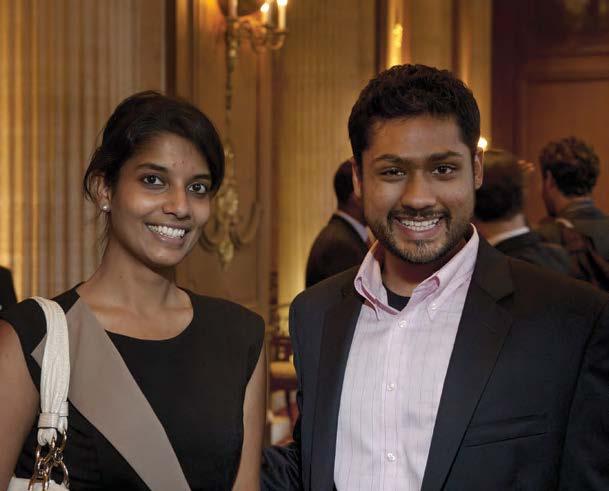
That’s what led to Outcome’s downfall. After reading about the big fundraising round, a company employee contacted a Wall Street Journal reporter “to tell him the truth of how business operated at Outcome,” according to court documents. The Journal’s story in October 2017 triggered an investor lawsuit and investigations by the Securities &
Exchange Commission and the Deptartment of Justice.


The money Shah and Agarwal pocketed will make it harder for the defense, says Kevin O’Brien, a former federal prosecutor and partner at Ford O’Brien Landy, a New York-based firm that does white-collar defense. “If the money comes in at trial, it’s pretty devastating because it goes to motive.”
The case involves more than 10 million documents, including email and voice messages. The government expects more than 1,000 exhibits and more than three dozen witnesses.
KEY WITNESS
Among the witnesses are three former employees who have pleaded guilty and are cooperating with prosecutors, including Ashik Desai, once a rising young star and protege of Shah.
The case could turn on the testimony of Desai, who oversaw the matching of lists of doctors’ offices where Outcome had installed screens with those requested by pharma advertisers, as well as measuring the effectiveness of ads in increasing prescriptions written by those doctors.
The defense will paint Desai as a rogue employee and “master con man” who lied to his bosses and “directly and actively oversaw each facet of the operations of the company in which the fraudulent conduct occurred,” according to pretrial court filings.
Defense attorneys will portray their clients as inexperienced managers who got in over their heads. They plan to introduce the concept of “blitz-scaling,” or the growth-at-all-costs mentality of hypergrowth startups.
As with Theranos, the Outcome Health trial will examine the line where entrepreneurial bluster becomes fraud, as well as whether investors did enough to check out the company’s claims before investing.
“When does fake it till you make it become fraud? The answer is it’s always fraud,” Mariotti says. “The hard part is proving it beyond a reasonable doubt.”
20 JANUARY 23, 2023 • CRAIN’S CHICAGO BUSINESS
Advertising Section To place your listing, contact Suzanne Janik at (313) 446-0455 or email sjanik@crain.com .www.chicagobusiness.com/classi eds OUR READERS ARE 125% MORE LIKELY TO INFLUENCE OFFICE
CLASSIFIEDS
Find your next corporate tenant or leaser.
CAREER OPPORTUNITIES CAREER OPPORTUNITIES CAREER OPPORTUNITIES CAREER OPPORTUNITIES CAREER OPPORTUNITIES
Connect with Suzanne Janik at sjanik@crain.com for more information.
CAREER OPPORTUNITIES
ChicagoBusiness.com
OUTCOME HEALTH from Page 1
Shradha Agarwal, left, and Rishi Shah once were the toast of the Chicago startup community.
ERIK UNGER
The scion of one of Chicago’s richest families is taking on the city’s crime
Just what the Civic Committee and Crown hope to accomplish is unclear. Neither would discuss the task force’s objectives or even disclose its membership.
“ ere isn’t much substance to report on right now, other than the fact that the Civic Committee shares the concerns of many other Chicago citizens about this issue and is in the process of listening and learning as to where we might be constructive,” Crown said in a text.
e big unknown is whether there will be a plan that Crown himself will attempt to put into action, whether others will try to or whether a blue-ribbon report due by spring will simply gather dust.
e Civic Committee’s e ort re ects the freighted moment in American politics in the wake of George Floyd’s murder at the hands of police in 2020, the rise of the Black Lives Matter and Defund the Police movements and the routine spasms of gun violence plaguing Chicago and other cities. New leadership at the Civic Committee and its parent, the Commercial Club of Chicago, is another factor in establishing the task force.
After shunning the spotlight for so long, can Jim Crown rise to the occasion as his 97-yearold father steps back, at a time when Chicago’s boardroom leadership has become less cohesive and city politics more fractured?
“He would be doing a great service for the city,” says businessman and former gubernatorial candidate Ron Gidwitz, who nonetheless wonders if Crown has “the political chops to make a di erence.”
Jacky Grimshaw, a top aide to Mayor Harold Washington and a vice president at the Center for Neighborhood Technology, isn’t so sure. “I wish I could say this is a brilliant choice because he’s done this, that and other things. Lester is civic-minded. He cares about the city. Jim hasn’t followed in his footsteps out here.”
FAMILIAR CAUSES
Urban violence and its roots are not new causes for the Crowns. e family donated $75 million in 2021 to the School of Social Service Administration at the University of Chicago, now the Crown School of Social Work, Policy & Practice. Crown Family Philanthropies is among the sponsors of the Partnership for Safe & Peaceful Communities, which has doled out $90 million to anti-violence e orts since 2016.
In North Lawndale, one of the partnership’s target communities, murders last year declined by nearly half. “Can you imagine (that result over) the whole city? It’d be a di erent story,” says Arne Duncan, a front-line anti-gun activist as CEO of Create Real Economic Destiny, which mentors at-risk youth. Ric Estrada, CEO of Metropolitan Family Services, a family service agency, says, “We all have similar goals. It would be great if we can agree on ve important ones.”
In June, the Crown Family foundation hosted a Loop breakfast meeting attended by Jim Crown, two dozen other business and civic leaders, Jens Ludwig of the University of Chicago Crime Lab and Duncan, the Civic Committee says. Ludwig, who isn’t commenting, o ered to conduct a later “executive education” session for businesspeople.
A few weeks later, the Civic Committee hired Derek Douglas as its president. e African American and former Obama White House aide, his Yale Law School pedigree aside, represents a shift in positioning for the committee. Douglas was a vice president for civic engagement and external a airs at U of C, where his job involved dealing with crime and other sensitive neighborhood issues.
Douglas says the job also exposed him to civic and corporate leaders, among them Crown, who advised on campus safety. At the Civic Committee, Douglas polled members about top-ofmind concerns. Crime was obvious. at’s when Douglas asked Crown to head up a task force, he says.
“I just heard that over and over, and that in uenced me, that we should create a task force,” Douglas says.
ere’s a good argument to be made that corporate Chicago became alarmed only after street violence invaded the Loop and adjacent business districts, and wealthy residents like Ken Grifn piped up and left town, along with Boeing, Caterpillar and other corporate headquarters. In September, McDonald’s CEO Chris Kempczinski aired his concerns at the Economic Club of Chicago, drawing a rebuke from Mayor Lori Lightfoot.
“Business wants to see police visible in front of establishments for their own bene t. It’s not doing anything to address gun violence in Englewood or Austin,” says David Olson, a Loyola University Chicago criminology professor. At the same time, he says, past anti-violence e orts have fallen short for lack of business participation.
Evan Hochberg, president of Crown Family Philanthropies, says it’s di cult to build coalitions around such complex issues. Dealing with City Hall, now that even aldermanic elections have been ideologically “nationalized” beyond ward service issues, is another hurdle.
“You could count on certain procedures to be in place even under a corrupt government,” says Paul O’Connor, former executive director of World Business Chicago. “It was a known system. Now, it’s moved to a more ideological base.”
One Chicago business leader isn’t waiting for an organized corporate e ort. River North landlord Albert Friedman hired o -duty police in his nine-block Courthouse District and scavenger service and gra ti busters to clear alleys and clean sidewalks and building exteriors. Friedman won’t say how much he spends, only that his 20,000 tenants share the cost.
Still, he acknowledges, “I can’t take care of the entire city. You have to be a team.”
After Kempczinski’s comments ignited a political restorm, McDonald’s pledged $3.5 million to 40 neighborhood organizations. (It also says Kempczinski joined the Crown-led task force.) e CEO had called for “more partnership” in addressing crime.
VESTED INTEREST
e Crowns have a vested interest in the fate of Chicago, a link that goes back more than a century, to Jim Crown’s grandfather Henry and his brothers starting a sand and gravel business that grew into construction supplier Material Service Corp. Forbes in 2020 ranked the Crowns as the 34th richest U.S.
family, with an estimated net worth of $10.2 billion.
Jim Crown succeeded his father in 2018 as chairman and CEO of Henry Crown & Co., where he has worked for most of his career. He also sits on the boards of two of the company’s primary public holdings, defense contractor General Dynamics and bank JPMorgan Chase. In the civic realm, he’s a trustee of the University of Chicago (chairing the board for six years) and the Museum of Science & Industry.
But unlike his father, he hasn’t been the face of major citywide initiatives. “Jim is more business, business, Crown enterprises,” says Ty Fahner, a former Civic Committee and Commercial Club president.
Crown family interests include big investments in Chicago real estate. ey have partnered with developer Sterling Bay, where Jim Crown’s nephew Keating Crown is active in acquiring properties in the bustling Fulton Market neighborhood. e Crowns also have invested in Sterling Bay’s massive Lincoln Yards project on the city’s North Side and its 47-story tower at 300 N. Michigan Ave. Another Crown-owned site at 130 N. Franklin St. has been awaiting redevelopment for decades.
Urbanologist Aaron Renn says the Crowns’ economic ties to the city and its reputation are “actually good. It aligns their interests.” He attributes New York City’s lower crime rate, in part, to extensive Manhattan real estate holdings by wealthy families.
“ is clearly was not his father’s issue,” Duncan says of Jim Crown. “ e city is in a di erent place. is is uniquely his own.”
ComEd plan would hike average household electric bills by 18% over four years
e ciency programs.
sumer advocates will ght it.”
returns on the most recent rate hike—nearly $200 million, the last such increase under the old formula law—were less than 8%.
at requested ROE then would rise each year, to 10.65% in 2027.
In a statement, ComEd said its plans would increase average monthly household electric bills by $4.25 each year, or $17 a month over the four-year period.
e average household monthly bill now is about $93, so that’s an 18% increase over that period.
e utility also said it seeks to spread out the outsize increase in 2024, so that ratepayers don’t get jarred by that one-year spike. Even so, the hike would boost the average monthly household electric bill by 7% to nearly $100 in 2024, according to ComEd disclosures.
at’s not counting expected increases in ComEd’s charges for power transmission (moving electricity from generation stations over high-voltage lines to the local power grid) and energy
“ ese proposed investments are necessary to deliver the resilient 24/7 power our customers depend on, prepare the grid for eets of electric vehicles and electri cation, integrate more clean energy and battery storage and equitably advance a decarbonized energy future,” ComEd CEO Gil Quiniones said in the statement.
CITING SUPPORT
ComEd says a large number of organizations support the hikes, including the Chicagoland Chamber of Commerce. “ComEd’s continued investments in a more sustainable system will keep Illinois competitive by providing a modernized grid that can attract businesses to our state and contribute to their performance,” chamber CEO Jack Lavin said in the statement.
e Citizens Utility Board, the state’s primary advocate for consumers on utility matters, tweeted its opposition. “ e pro t rate for shareholders is excessive,” CUB said. “CUB and other con-
As the largest utility in Illinois, ComEd is playing a central role in upgrading the Chicago-area power grid to allow for electri cation initiatives envisioned in the Climate & Equitable Jobs Act, Gov. J.B. Pritzker’s 2021 law aiming to eliminate carbon emissions from the state’s power plants within two decades.
at law also allowed the discredited formula rate to sunset.
at statute was enacted during the period in which ComEd admitted to an illegal in uence-peddling scheme designed to win the favor of Michael Madigan, then-Illinois House speaker and the state’s most powerful politician. Madigan is now under indictment for his alleged role. He’s pleaded not guilty and is set to stand trial in April 2024.
In criticizing ComEd’s rate request, consumer group Illinois PIRG referenced a recent court ling in which Madigan was captured on tape talking about how associates of his whom ComEd was paying under the table were
As the largest utility in Illinois, ComEd is playing a central role in upgrading the Chicago-area power grid.
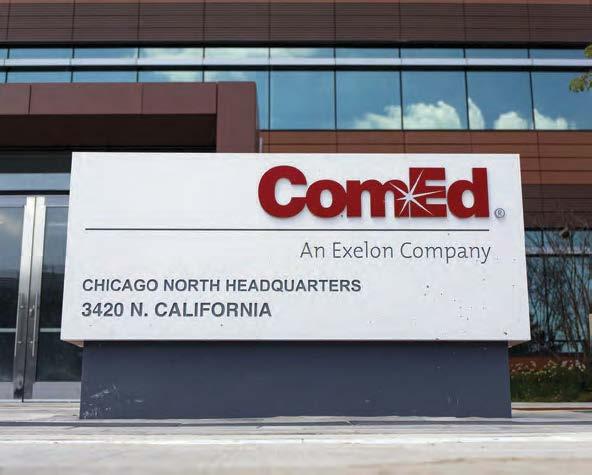
“making out like bandits.”
“With its proposed $1.5 billion rate hike, ComEd has the opportunity to ‘make out like bandits,’” Illinois PIRG Director Abe Scarr said in a release. “It’s crazy that
ComEd has emerged from its bribery scandal in position to raise rates more and make higher pro ts than it ever did under the ‘formula rates’ it won through its scheme.”
CRAIN’S CHICAGO BUSINESS • J ANUAR Y 23, 2023 21
CROWN from Page 1
COMED
from Page 3
ALAMY
Nicor, Peoples Gas propose income-based utility rates alongside record hikes
was part of Gov. J.B. Pritzker’s Climate & Equitable Jobs Act, or CEJA, which also requires power plants to stop burning fossil fuels by 2045.
e ICC, with three of four sitting members appointed by Pritzker, voted unanimously last month to require large utilities to propose low-income discounts.
Utilities also face increasing public pressure as more Illinois households struggle to a ord heat and light. A two-tier rate structure could enable utilities to ease rates for some customers without sacri cing revenue.
e biggest potential impact so far will be felt in Chicago. Peoples Gas, whose steadily climbing rates have helped make heat una ordable for about a quarter of Chicago households, is proposing a level of subsidy that could signi cantly raise natural gas bills of unsubsidized city residents and especially businesses.
As part of Peoples’ proposed $402 million delivery rate hike—a record gas-utility increase in Illinois—the company asks the Illinois Commerce Commission to approve a 40% discount on the customer and distribution charges for quali ed households each month, according to an ICC ling. Customers eligible for the utilities’ existing customer assistance programs would qualify
for the discount. At Peoples, those programs are available to households with incomes no higher than $55,000 annually for a family of four, representing 200% of the poverty level in the city.
POTENTIAL BACKLASH
e prospect that certain customers will pay less for the heat and electricity they use than others may stir up the kind of backlash that doomed Pritzker’s proposal to amend the Illinois Constitution to allow higher income tax rates on higher earners.
With heating bills higher than ever, the yearly cost of staying warm isn’t that much lower than state income taxes for a median Chicago household. Median income in the city is nearly $50,000. State income tax on that is less than $2,500, and that’s before any credits. e average annual heating bill last year in Chicago was $1,564, according to Peoples.
Peoples declines to lay out the potential cost and impact on unsubsidized ratepayers, saying it will le that information with the commission “in a few months.”
But the e ect could be dramatic.
With a combined customer and distribution charge of about $45 a month under Peoples’ proposed new rates, the discount would amount to about $18 each month, or $216 annually, the Citizens
Utility Board says.
Based on the income qualications for low-income assistance in Chicago, about 40% of the city’s households potentially could qualify for discounts, CUB estimates. Currently, only about 60,000 Peoples customers get assistance, partly because funding for such programs typically runs out before all demand is met. at discourages many eligible customers from applying. But with an $18-a-month discount on o er, applications could well mushroom.
Forty percent of Peoples’ household heating accounts equals about 265,500. If all of them apply for the discount, the cost of the subsidy would reach more than $57 million a year. at would fall on all other customers, including businesses.
Consumer advocates at the Citizens Utility Board support more low-income bill-paying help, but Executive Director David Kolata says a system where “50% of the city is subsidizing the other 50%” isn’t fair. Likening the discount proposal to “rearranging deck chairs on the Titanic,” he argues that more needs to be done to rein in Peoples Gas’ costly, behind-schedule, over-budget program to overhaul Chicago’s underground pipe delivery system.
One way to tamp down public anger at such a result is to force businesses to shoulder more of the costs
than unsubsidized households. Peoples’ ICC ling proposes to do just that, but it doesn’t clarify how much more businesses would pay.
In a Dec. 15 ICC report on the issue, Peoples estimated it would cost $14 million if 10% of its residential customers—about the share who currently get low-income assistance—received a 30% discount. at would correspondingly raise the gas bill of an unsubsidized customer by $1.59 a month, according to the report. e utility ended up proposing a 40% discount but hasn’t said how the cost would be allocated between businesses and unsubsidized residential customers.
NICOR’S PLANS
In Nicor’s proposal, the e ect on unsubsidized ratepayers appears more modest.
Nicor estimates the cost of the discounts at $8.9 million, with unsubsidized households paying an extra $4.25 annually to cover the price tag, according to an ICC ling. Nicor is proposing a $13.05 monthly discount for households below poverty level and an $11.60 discount to those between 100% and 200% of poverty level.
Asked how many customers would qualify for discounts, spokeswoman Jennifer Golz points out that nearly a quarter of the households in Nicor’s service territory have yearly income of $35,000 or less.
As heating bills soar, utilities are proposing to charge low-income households lower rates than everyone else.
Proposed monthly discounts for low-income households beginning in 2024: Peoples: $18* Nicor Gas: $13.05 for those below poverty line; $11.60 for those between 100% and 200% of poverty level
With this decision, Illinois joins several other states that require or allow utilities to o er low-income discounts. California and Massachusetts have aggressive policies, according to the ICC report. Other states with programs include Vermont, Washington, Arizona and Rhode Island.
Peoples’ and Nicor’s proposals are subject to ICC approval. e commission has 11 months to rule on their rate-hike requests.
Calling All Fast-Growing Companies
22 JANUARY 23, 2023 • CRAIN’S CHICAGO BUSINESS
fee
Questions?
Join Crain’s renowned Fast 50 list - a ranking of the 50 fastest-growing companies in the Chicago area. The top 50 companies will be featured in our print and digital publication on June 19. APPLY BY FEBRUARY 24 | no application
ChicagoBusiness.com/Fast50Apply
Contact Sophie Rodgers at sophie.rodgers@crain.com.
GAS from Page 1
202020212022 $1,129 $661 $1,398 $913 $1,564 $1,351 *Estimated
filings AVERAGE ANNUAL RESIDENTIAL HEATING BILL HOT TOPIC Peoples Gas Nicor Gas
Sources: Nicor, Illinois Commerce Commission
This bungalow’s rehabbers refused to pop the top

 RODKIN
RODKIN
After they bought a 1920s Ravenswood Manor bungalow, Jen Eisenberg and Logan Stillwell weren’t entirely sure what the makeover they had in mind would entail, but they knew one thing.





ere was no way we could pop the top,” or add a full second oor, Eisenberg says. A cionados of the classic Chicago bungalow generally scorn the practice of popping up the top to add a full second oor. eir opposition even comes with its own hashtag, courtesy of the Chicago Bungalow Association, #Stop ePop.
“
Built in about 1918, the brick bungalow is three doors down Giddings Street from the North Branch of the Chicago River and a short walk to the Francisco stop on the CTA’s Brown Line in Ravenswood Manor, all ingredients of a classic Chicago neighborhood setting.

But a succession of rehabs had removed nearly all vintage nishes inside. Eisenberg and Stillwell brought in an architect, Linda Kanoski of Crew Chicago, and a general contractor, Gary Marks of Gary Marks Builds, to help them right the past wrongs and expand the house appropriately.
“We wanted to bring back the feeling of a bungalow,” Eisenberg says. Along the way, some happy discoveries made that easier to do, as they pulled o modern nishes and found the originals still in place.
Eisenberg and Stillwell intended to move in with their two children when done with the rehab, but their family plans have changed. ey’re putting the ve-bedroom bungalow on the market with an asking price of $1.895 million. e Leigh Marcus Team at @properties Christie’s International Real Estate has the listing.


CRAIN’S CHICAGO BUSINESS • J ANUAR Y 23, 2023 23 EDITORIAL 312-649-5200 CUSTOMER SERVICE 877-812-1590 ADVERTISING 312-649-5492 CLASSIFIED 312-659-0076 REPRINTS 212-210-0707 editor@chicagobusiness.com Vol. 46, No. 4 – Crain’s Chicago Business (ISSN 0149-6956) is published weekly, except for the rst week of July and the last week of December, at 130 E Randolph St Suite 3200, Chicago, IL 60601 $3 50 a copy, $169 a year Outside the United States, add $50 a year for surface mail Periodicals postage paid at Chicago, Ill Postmaster: Send address changes to Crain’s Chicago Business, 1155 Gratiot Ave , Detroit, MI 48207 Four weeks’ notice required for change of address. © Entire contents copyright 2023 by Crain Communications Inc. All rights reserved. HOW TO CONTACT CRAIN’S CHICAGO BUSINESS
Instead of gunking up the front in a way bungalow a cionados sneer at, the pair who updated this house in Ravenswood Manor expanded along the side I BY DENNIS
PHOTOS BY REAL VISION
WE’RE EXPANDING OUR REACH.
UChicago Medicine has partnered with AdventHealth.
Now, UChicago Medicine is making an even bigger impact on Chicagoland. Because we’re bringing our excellent specialty care and latest clinical trials to the western suburbs. For world-class healthcare, right in your own backyard. Learn more at: HealthyChicagoland.org

BOLINGBROOK • GLENOAKS • HINSDALE • LA GR ANGE
 BY STEVEN R. STRAHLER
BY STEVEN R. STRAHLER


 BY STEVE DANIELS
BY STEVE DANIELS

 BY JOHN PLETZ
BY JOHN PLETZ






 BY STEVE DANIELS
BY STEVE DANIELS




































































































































































 BY KATHERINE DAVIS
BY KATHERINE DAVIS






















 BY DANNY ECKER
BY DANNY ECKER











 ARIEL from Page 3
ARIEL from Page 3




























 RODKIN
RODKIN








